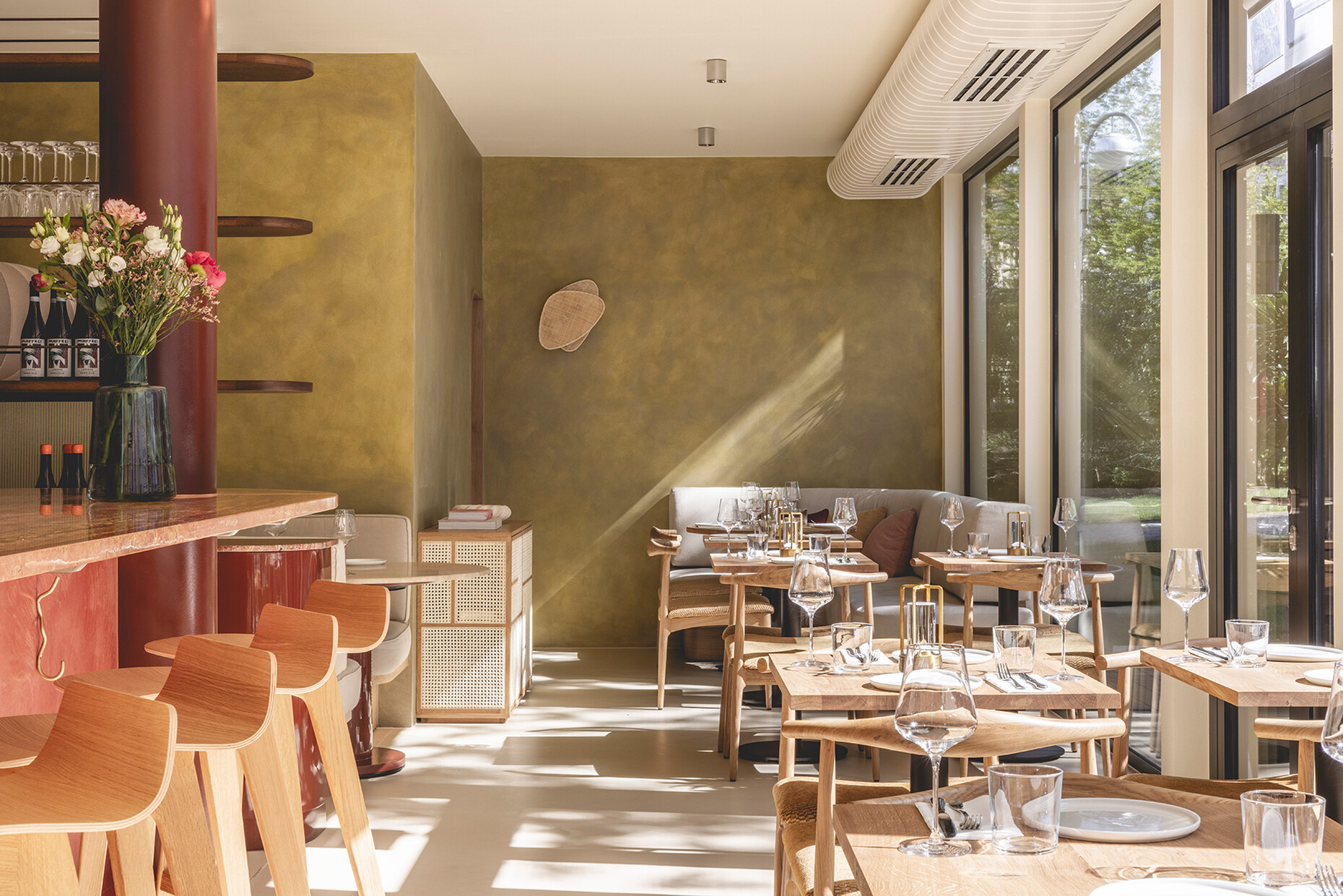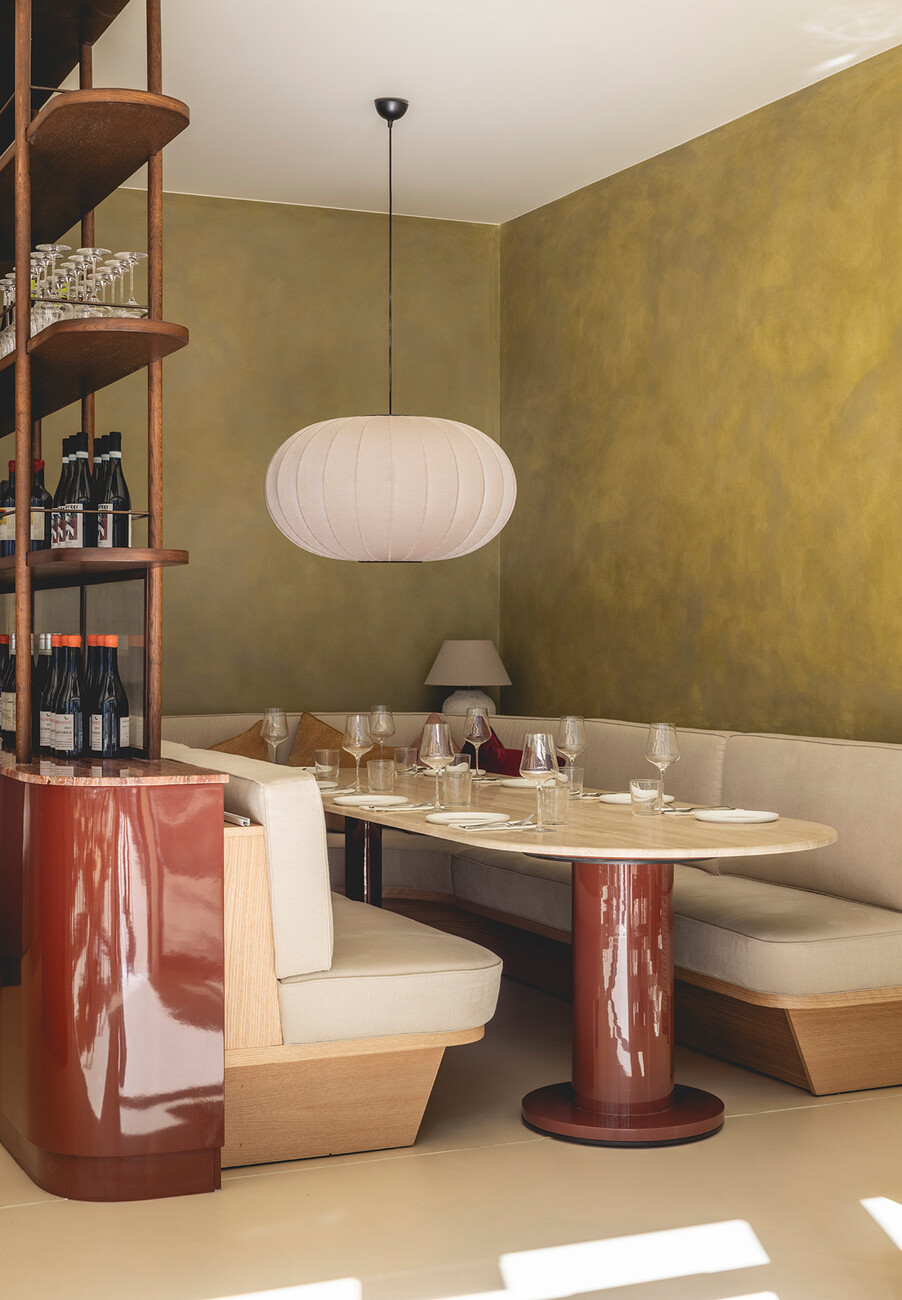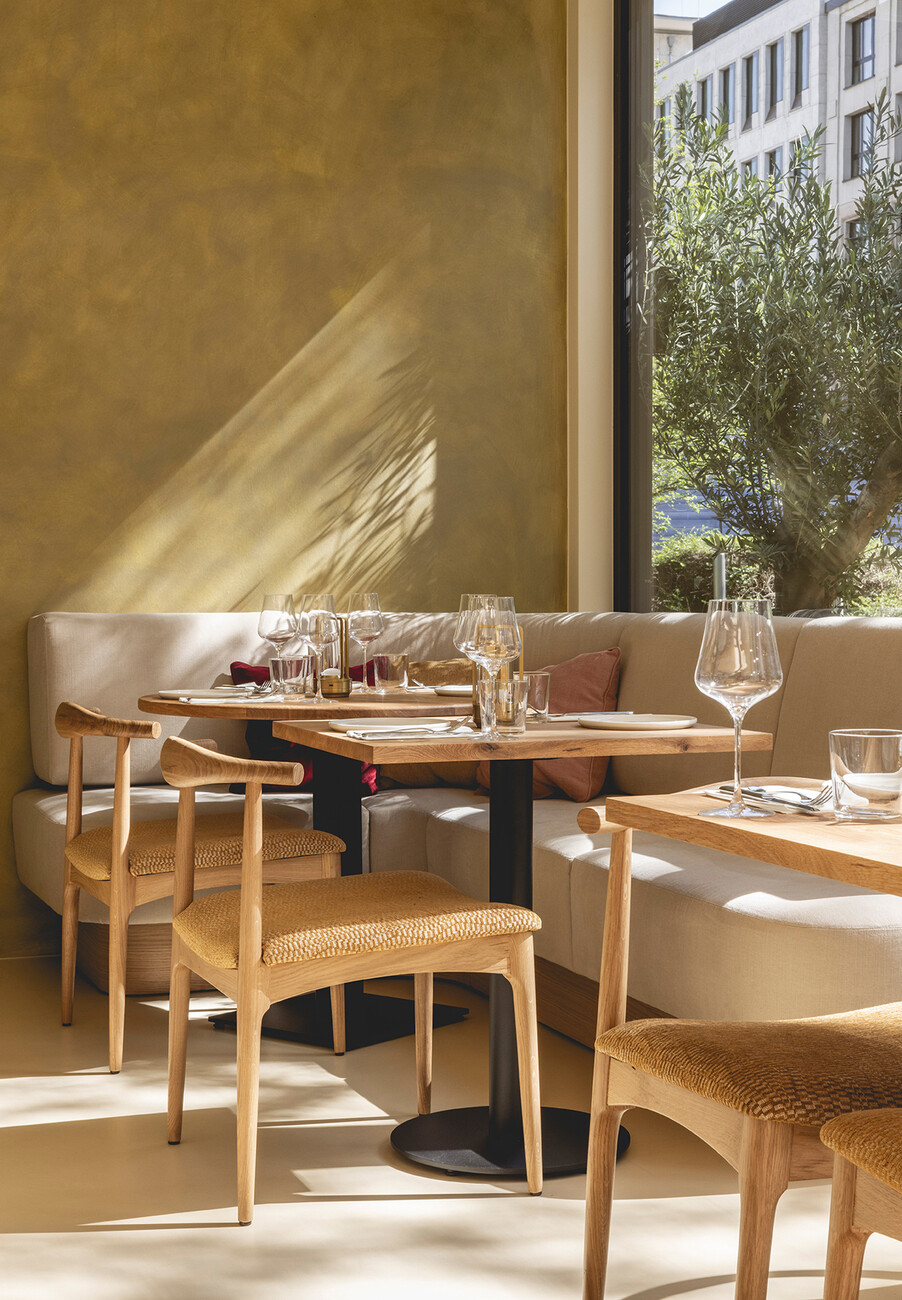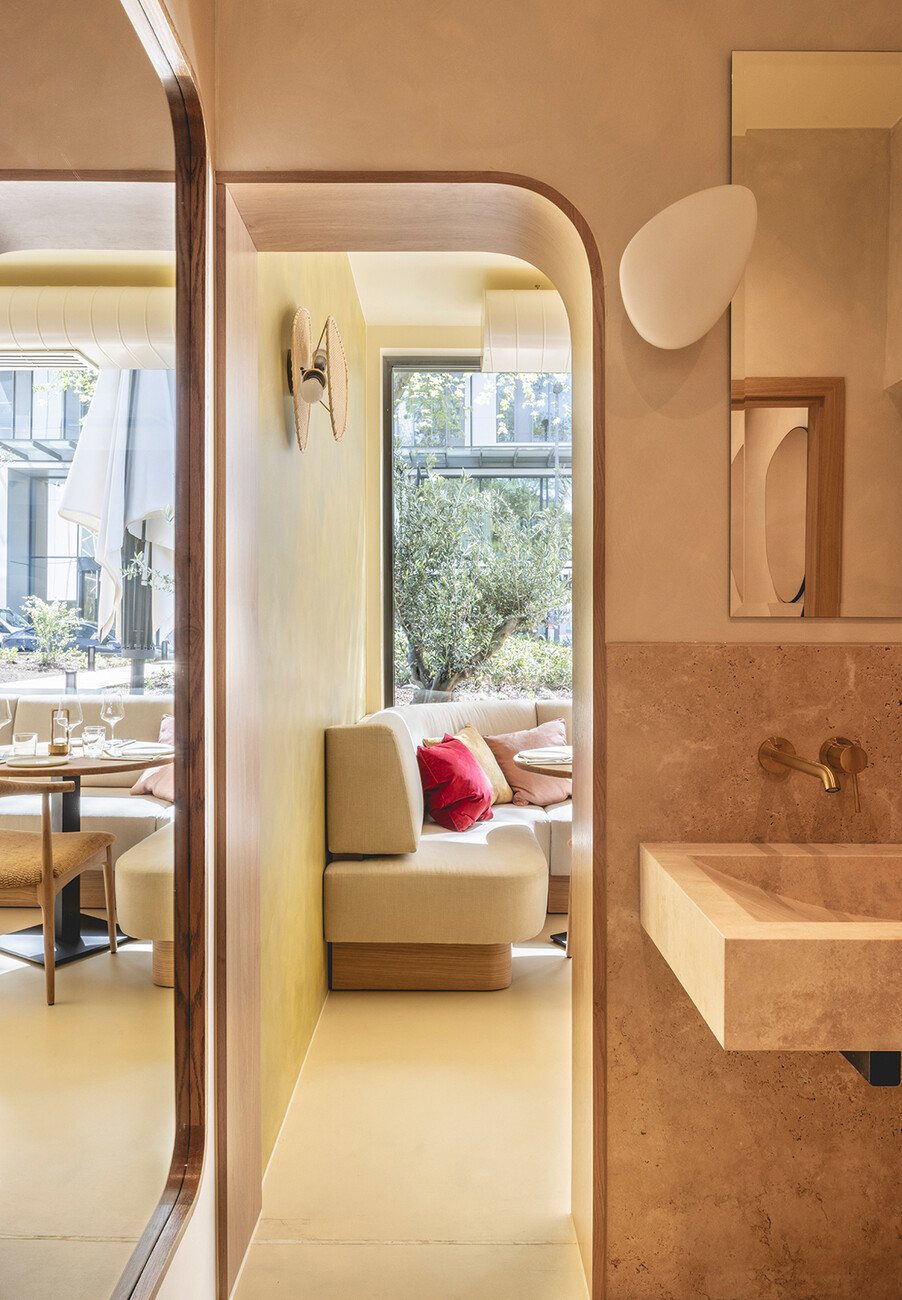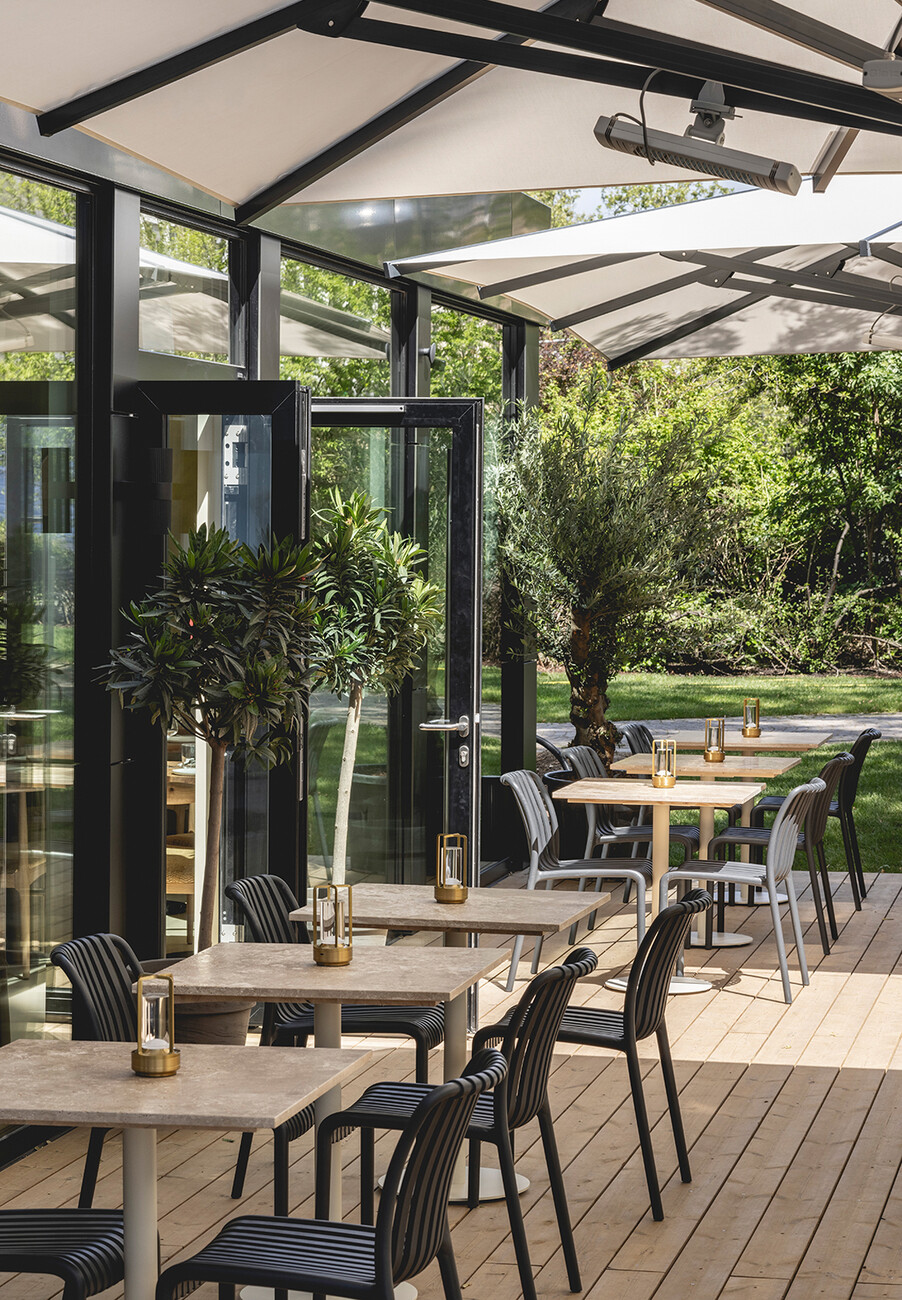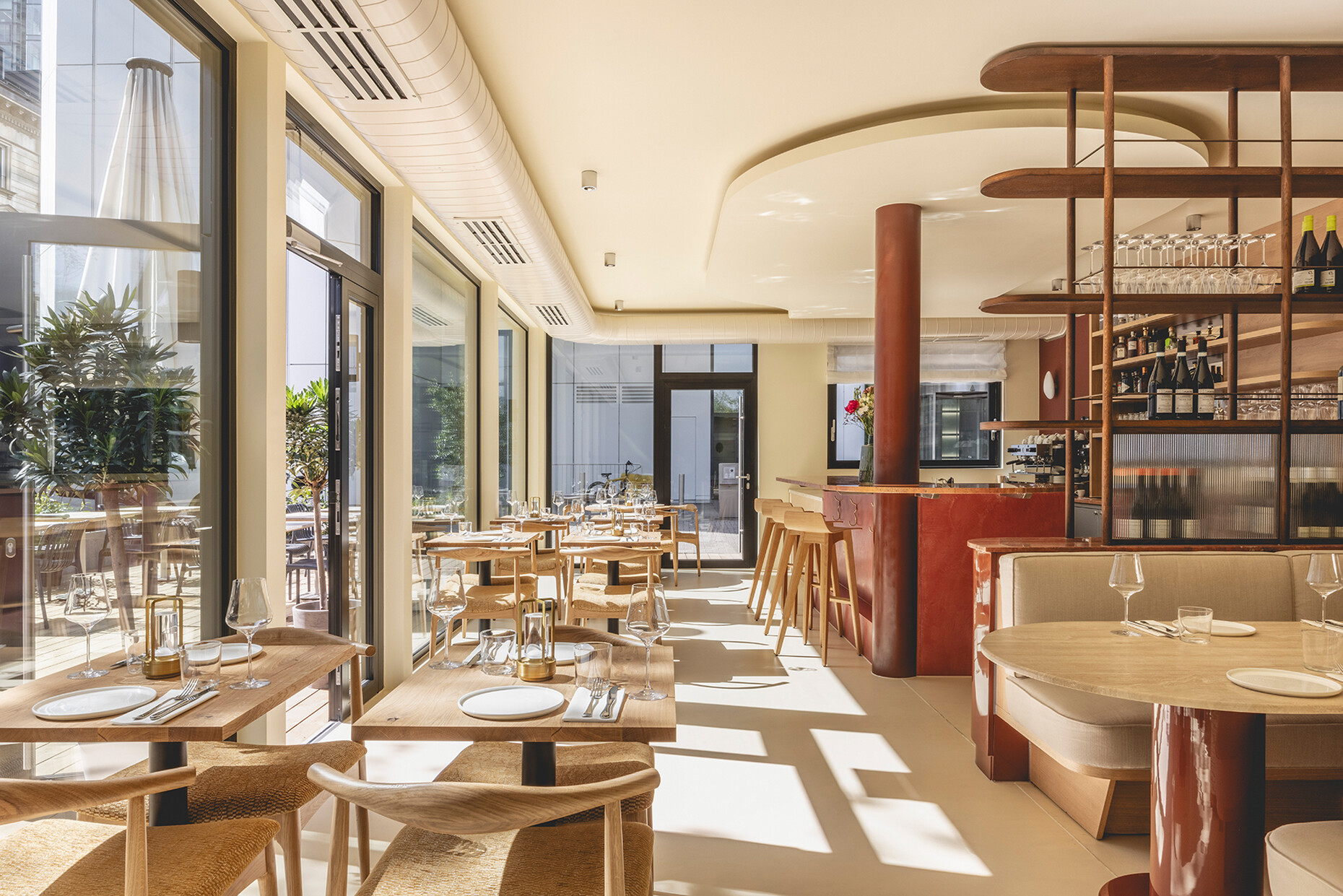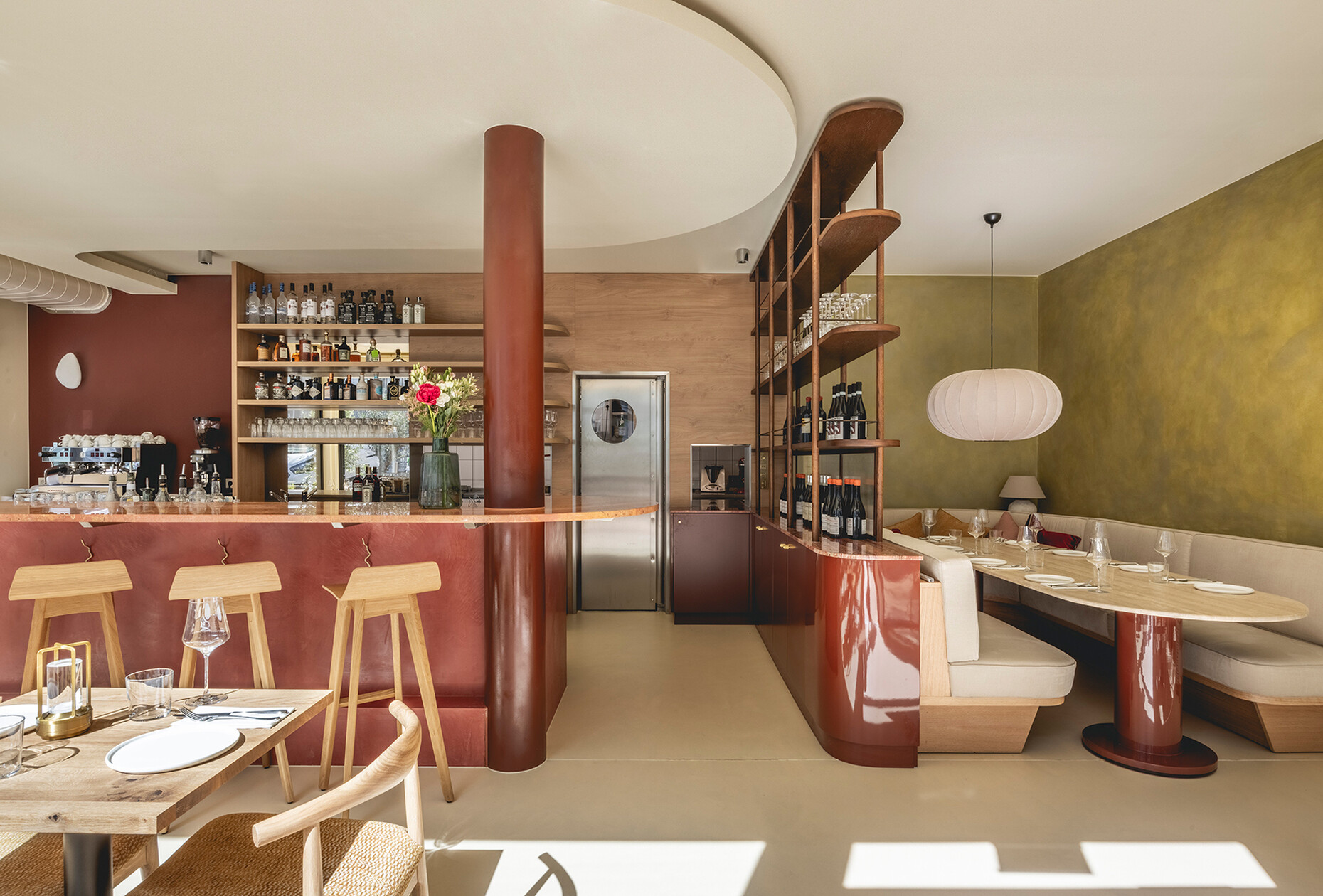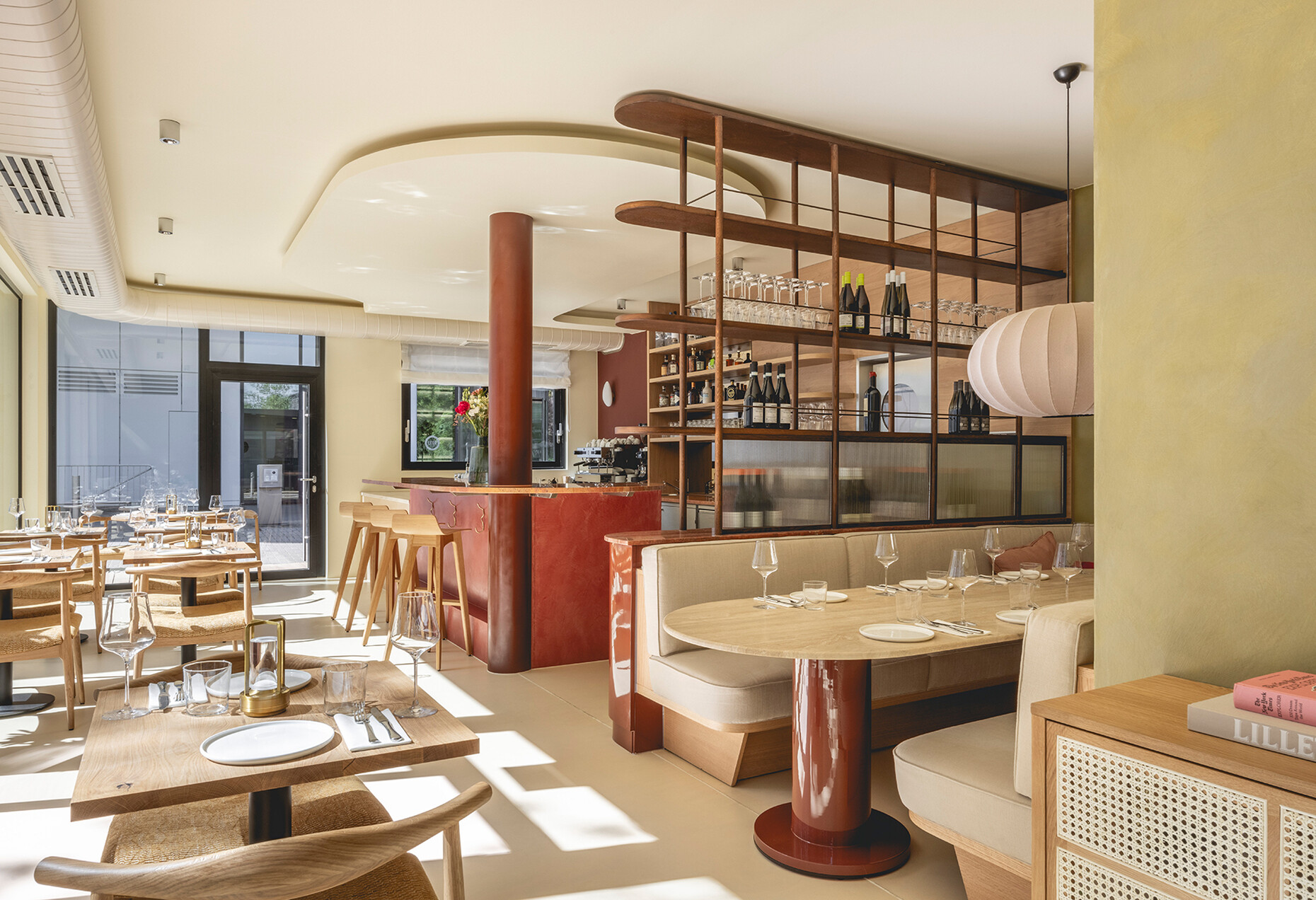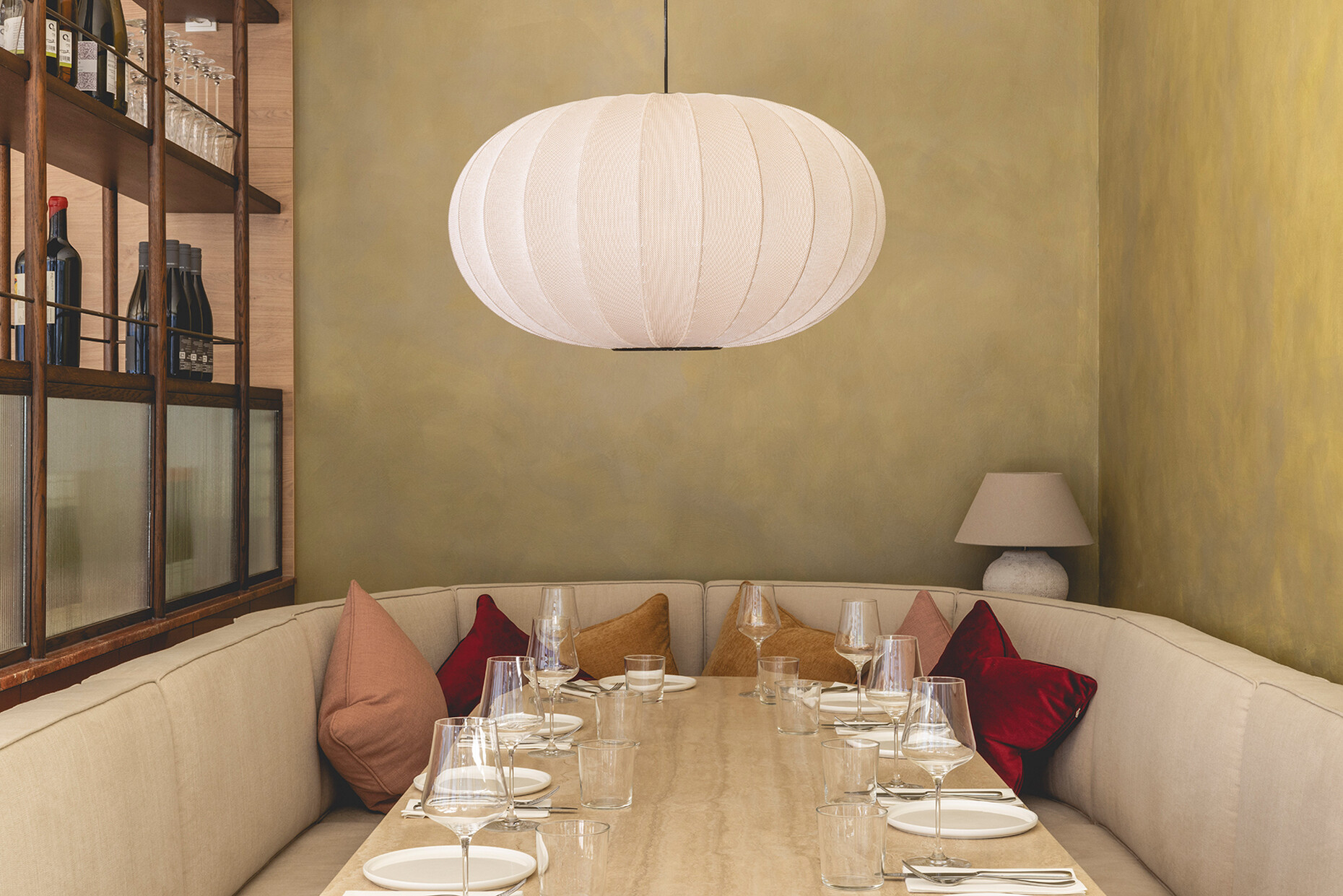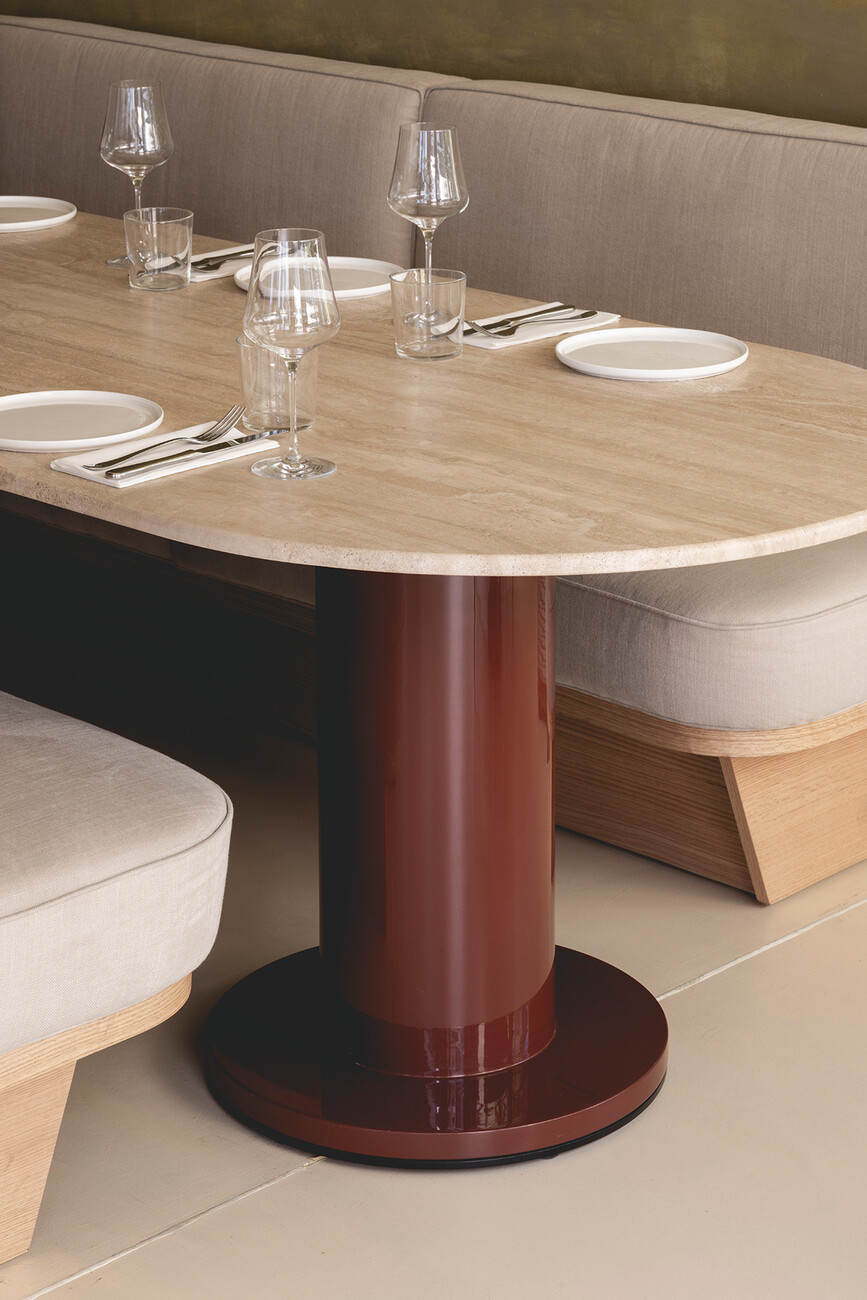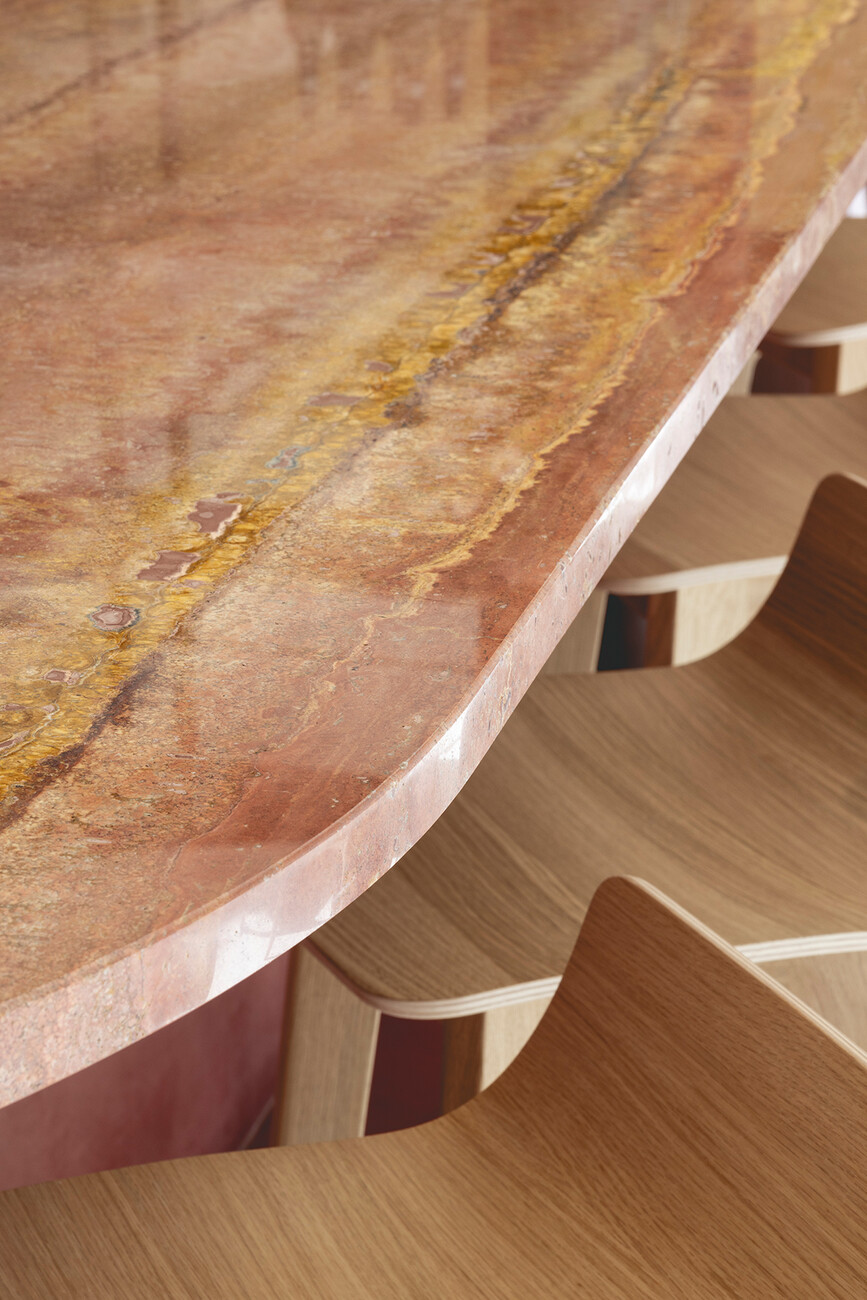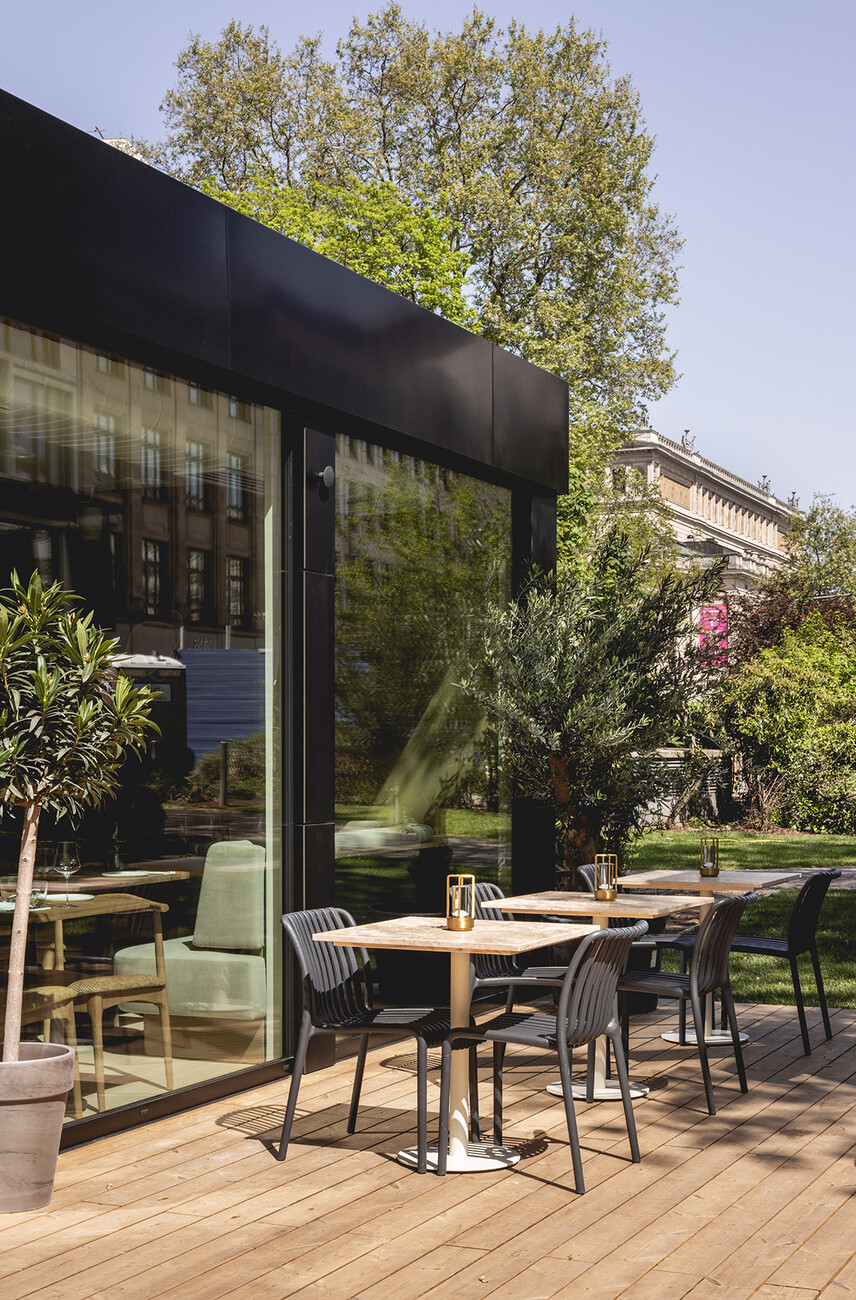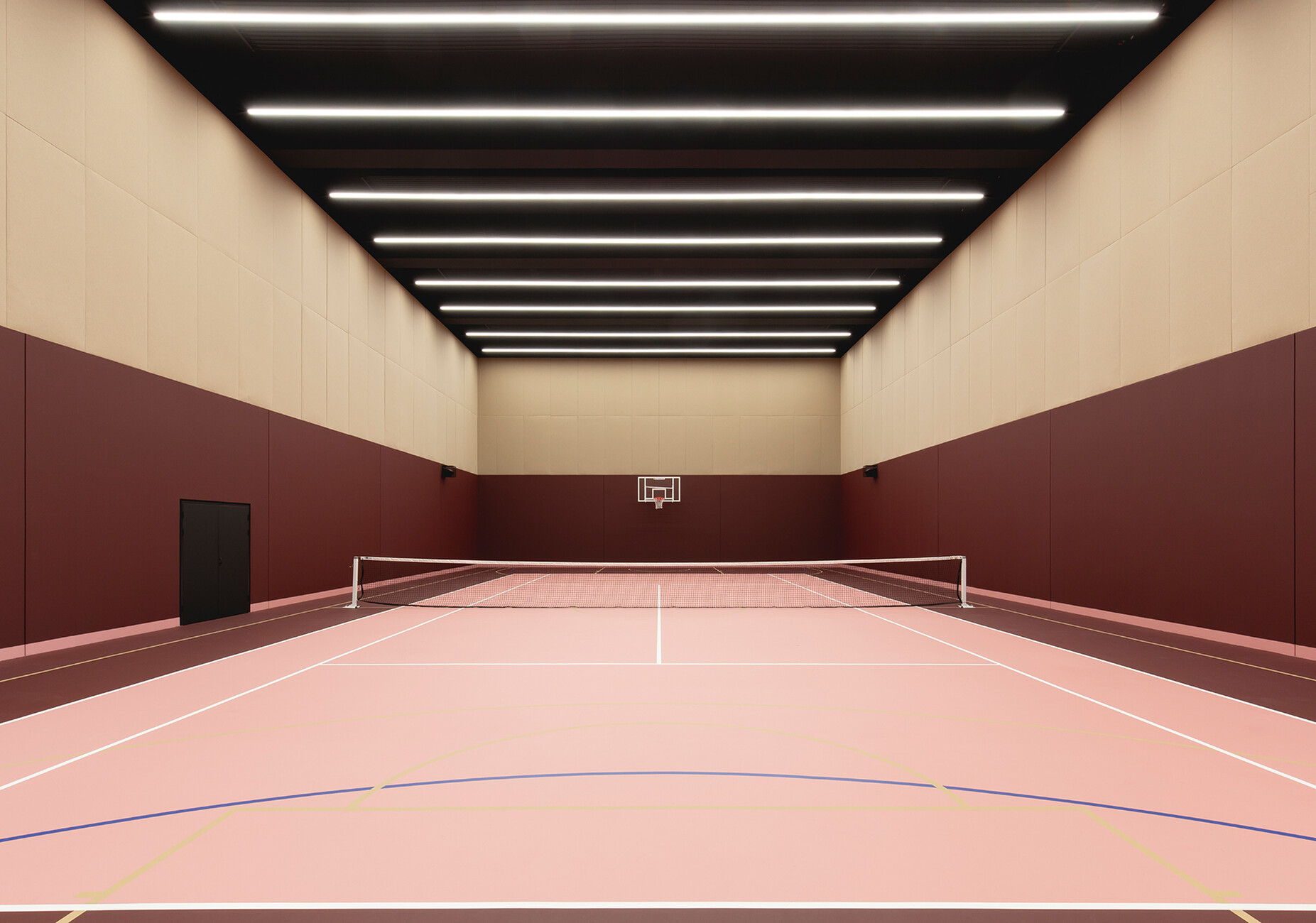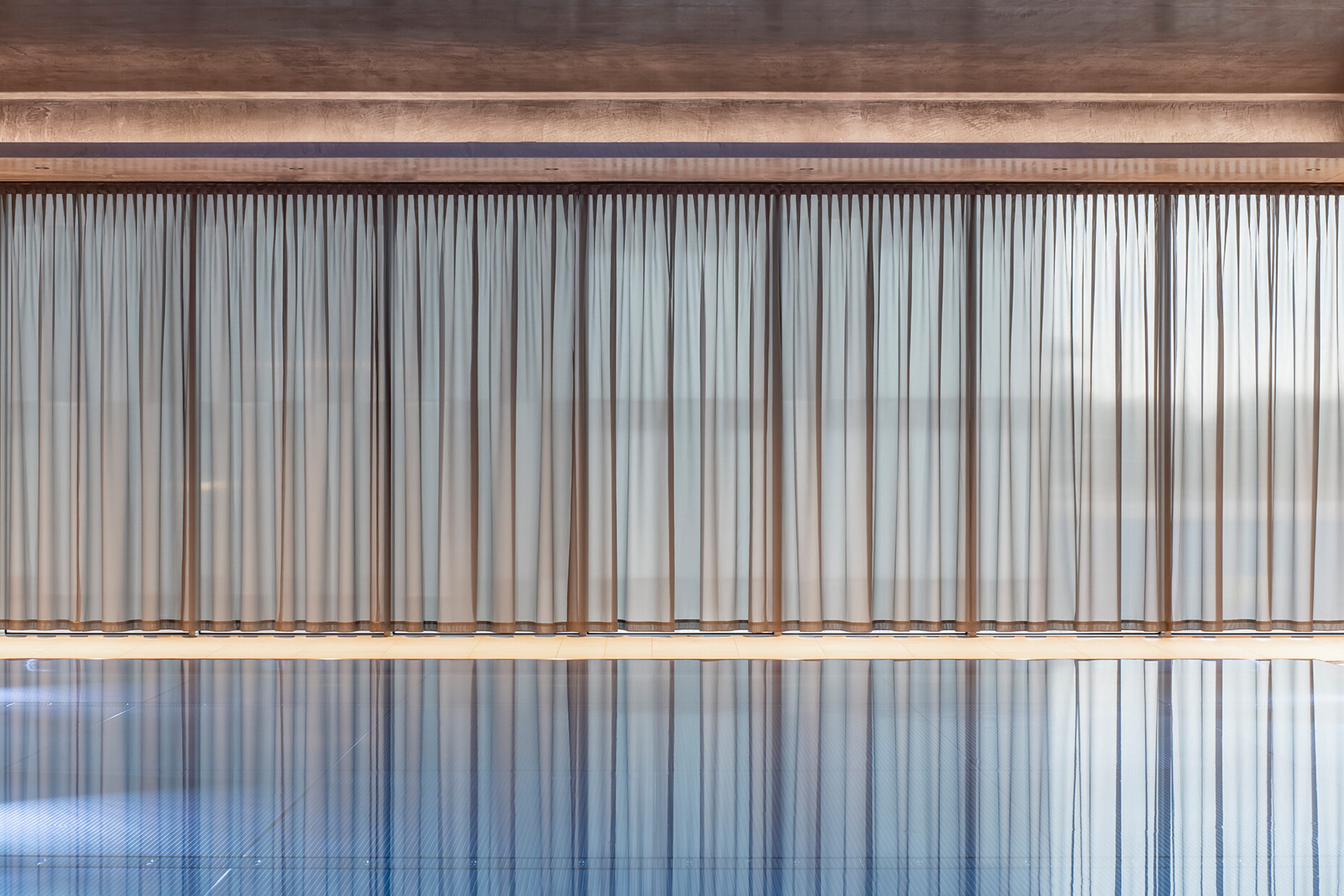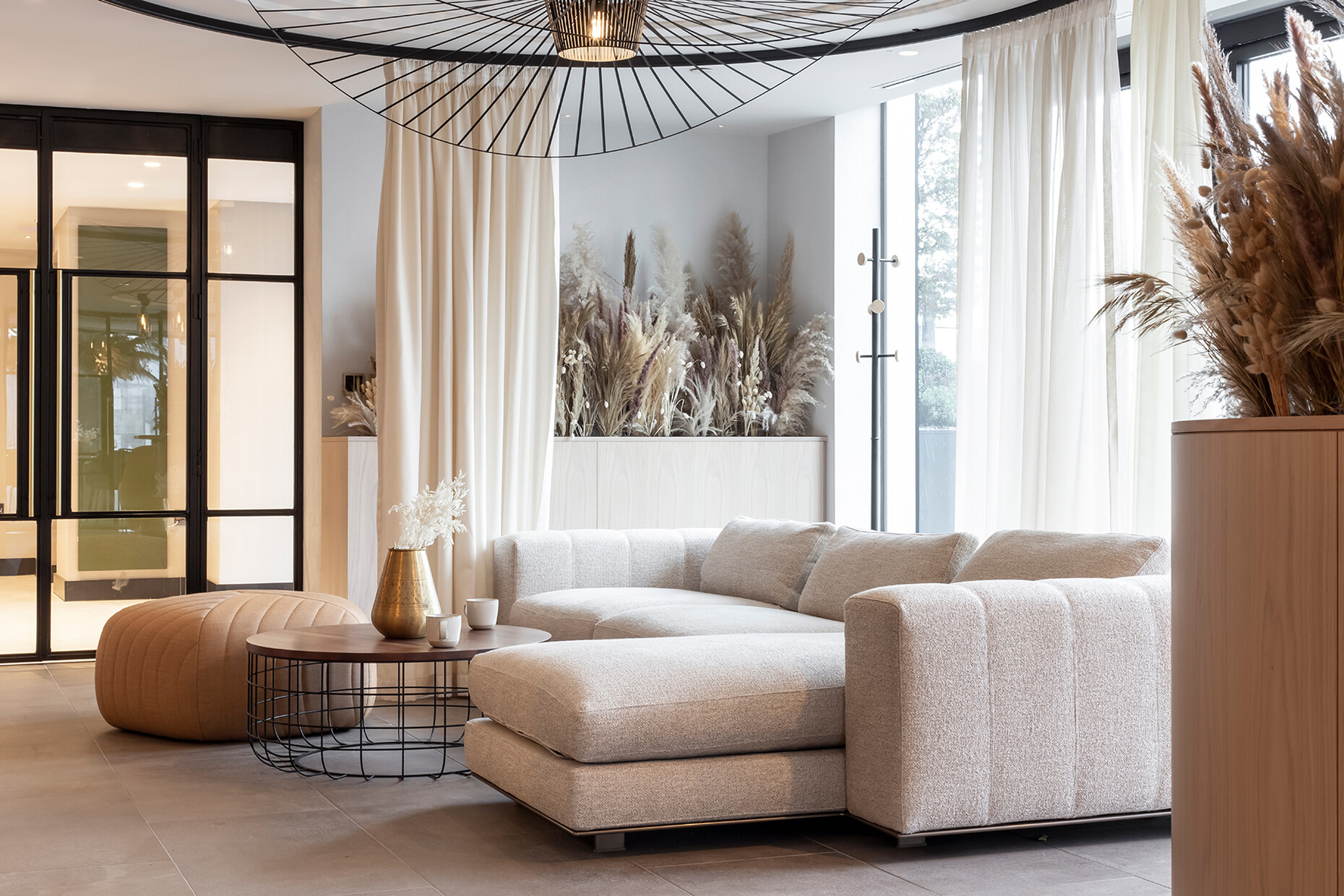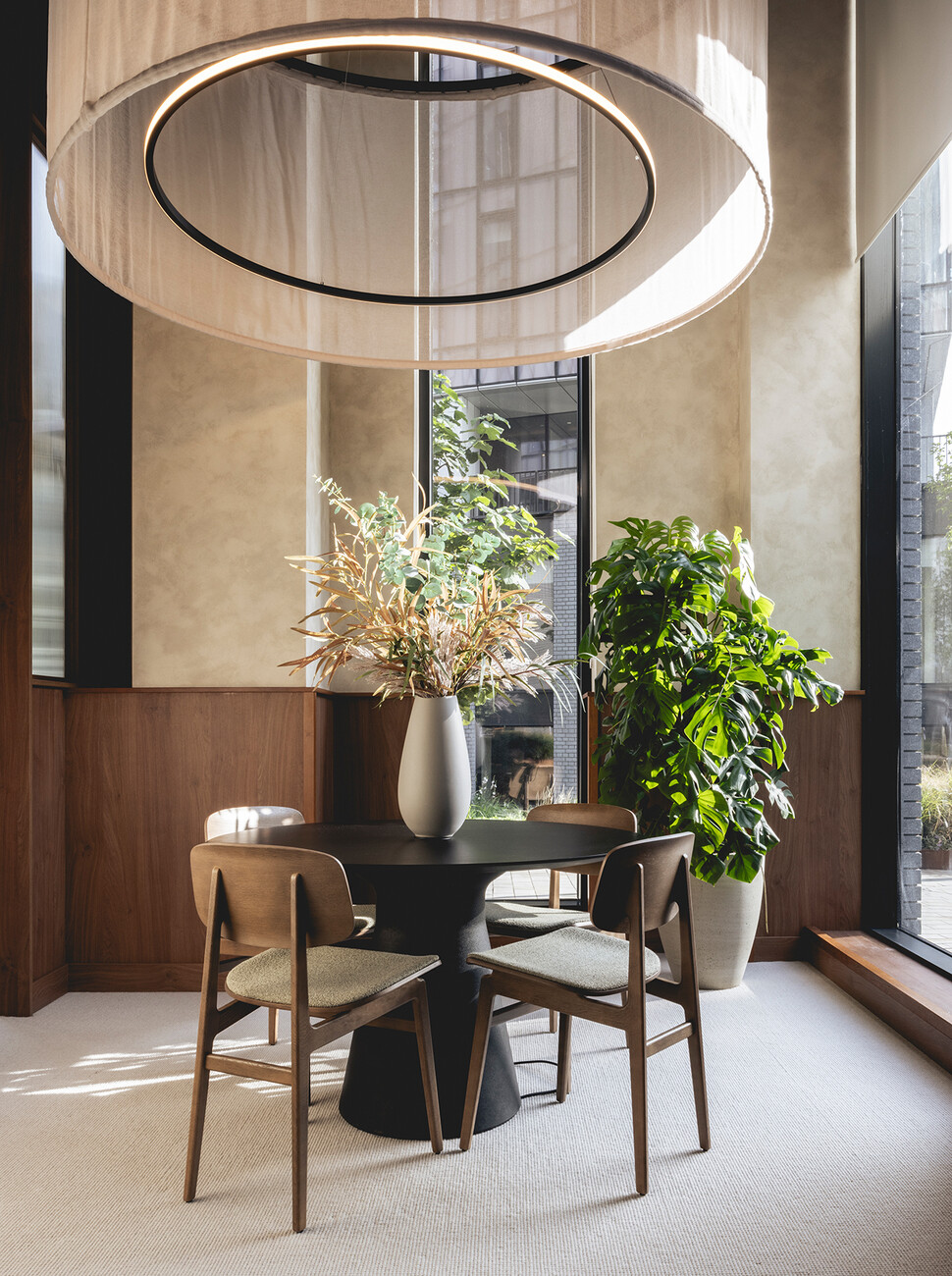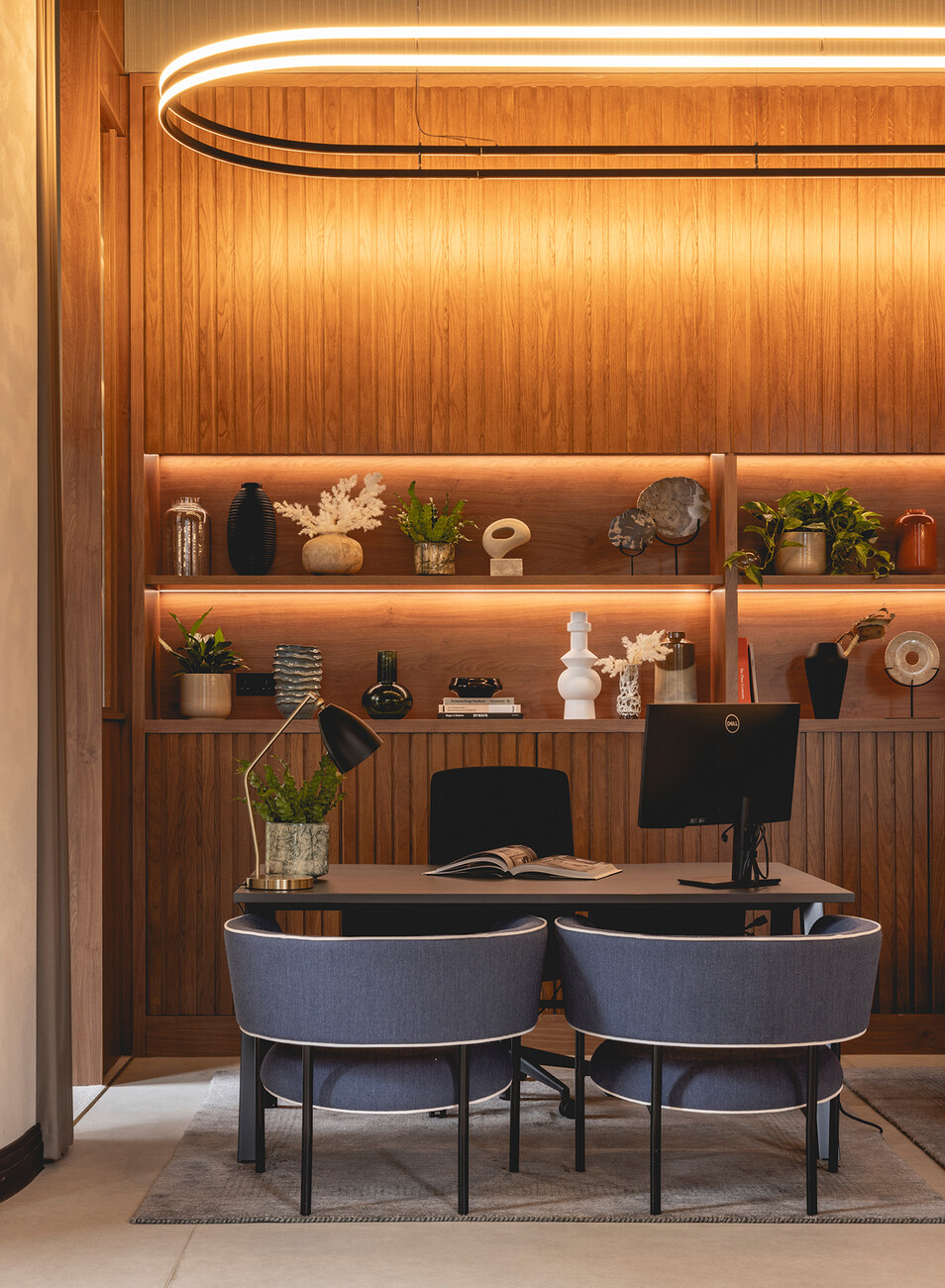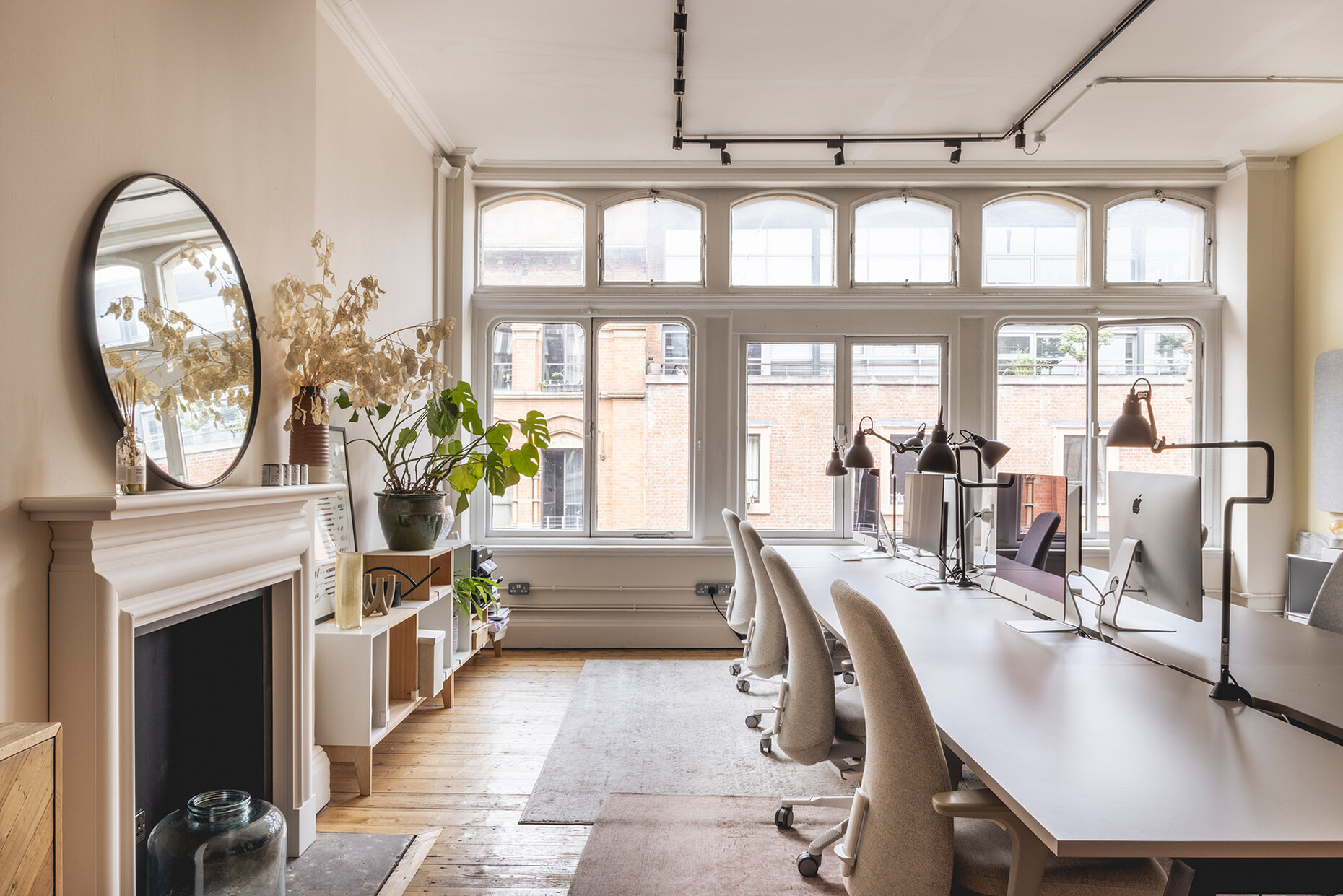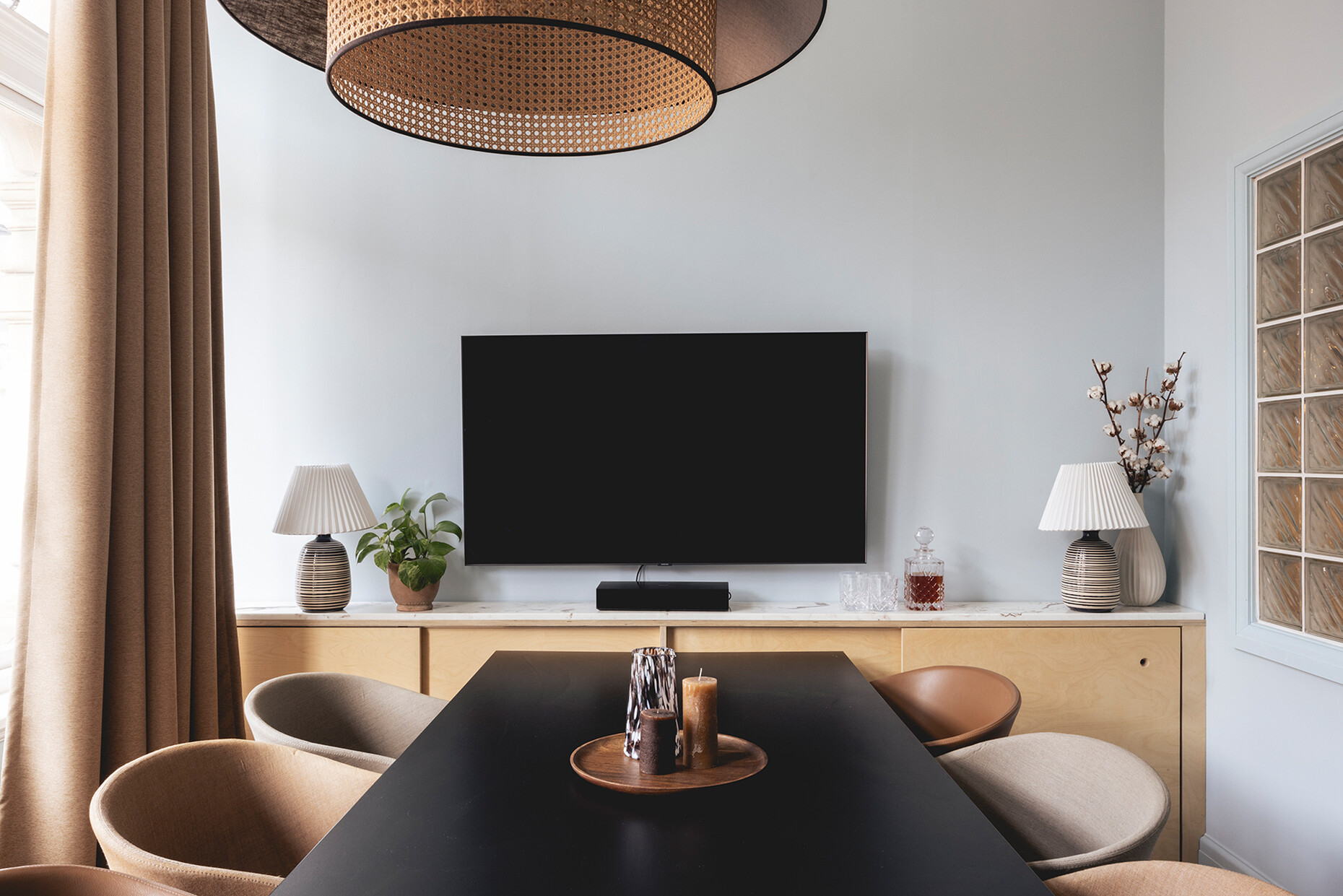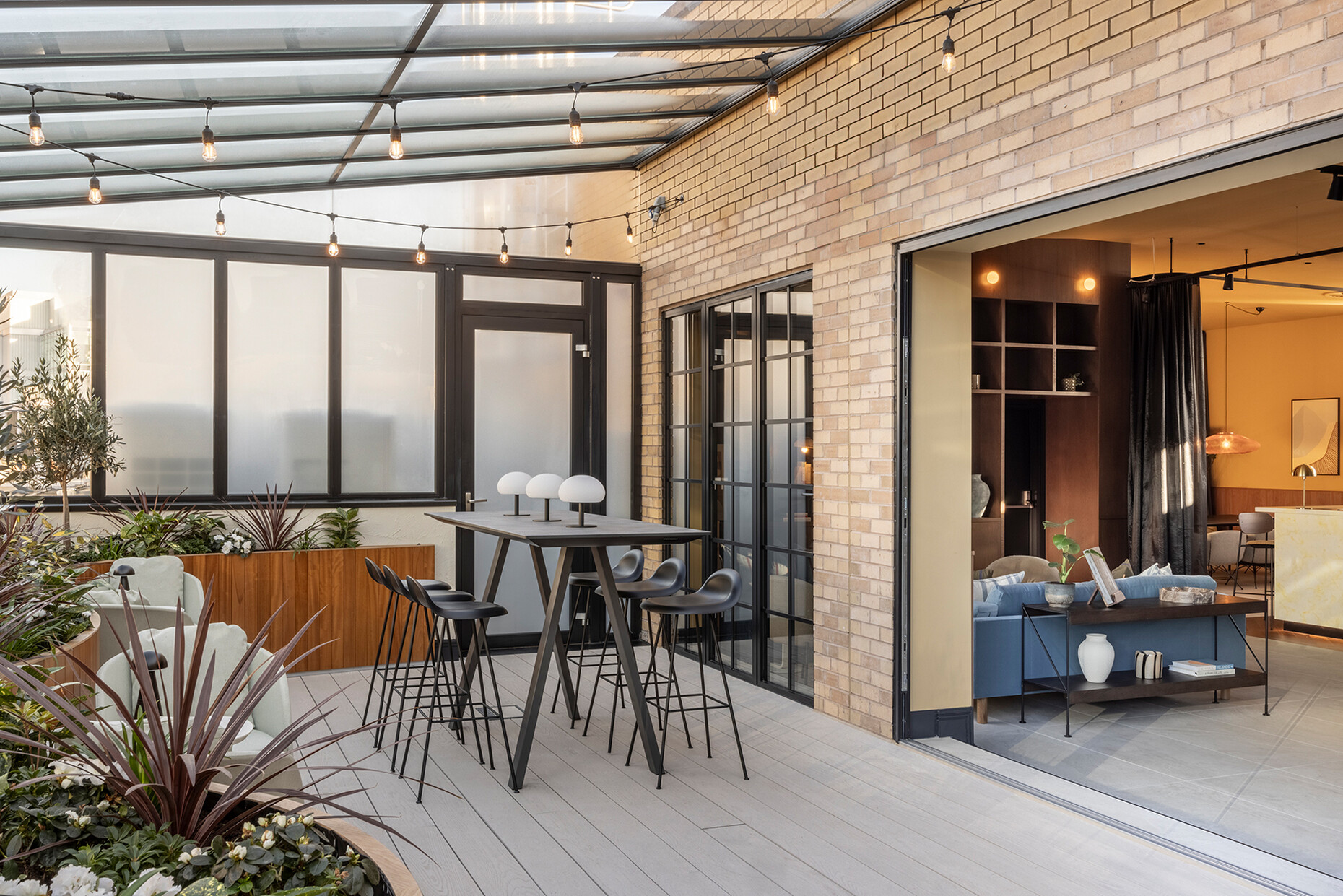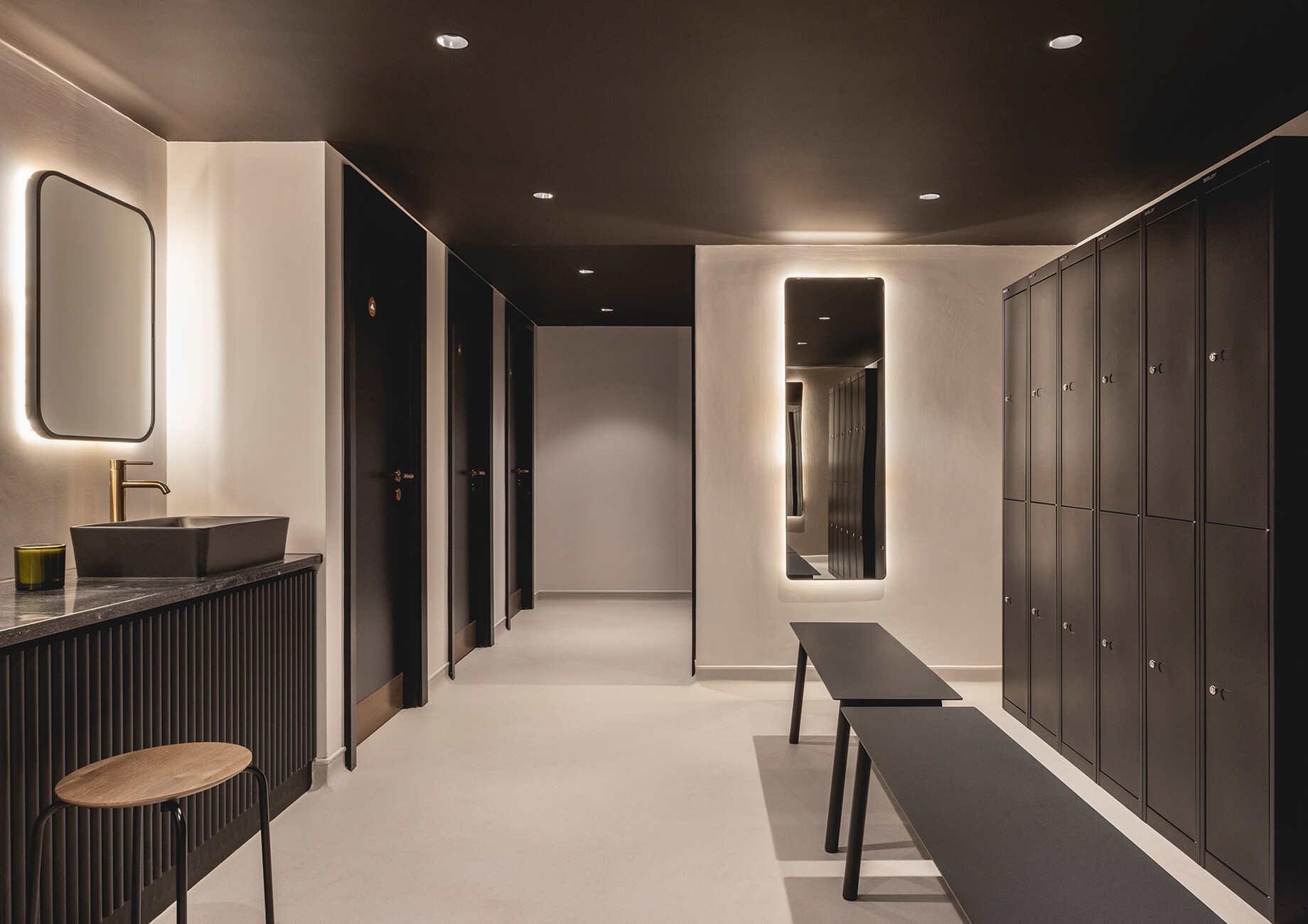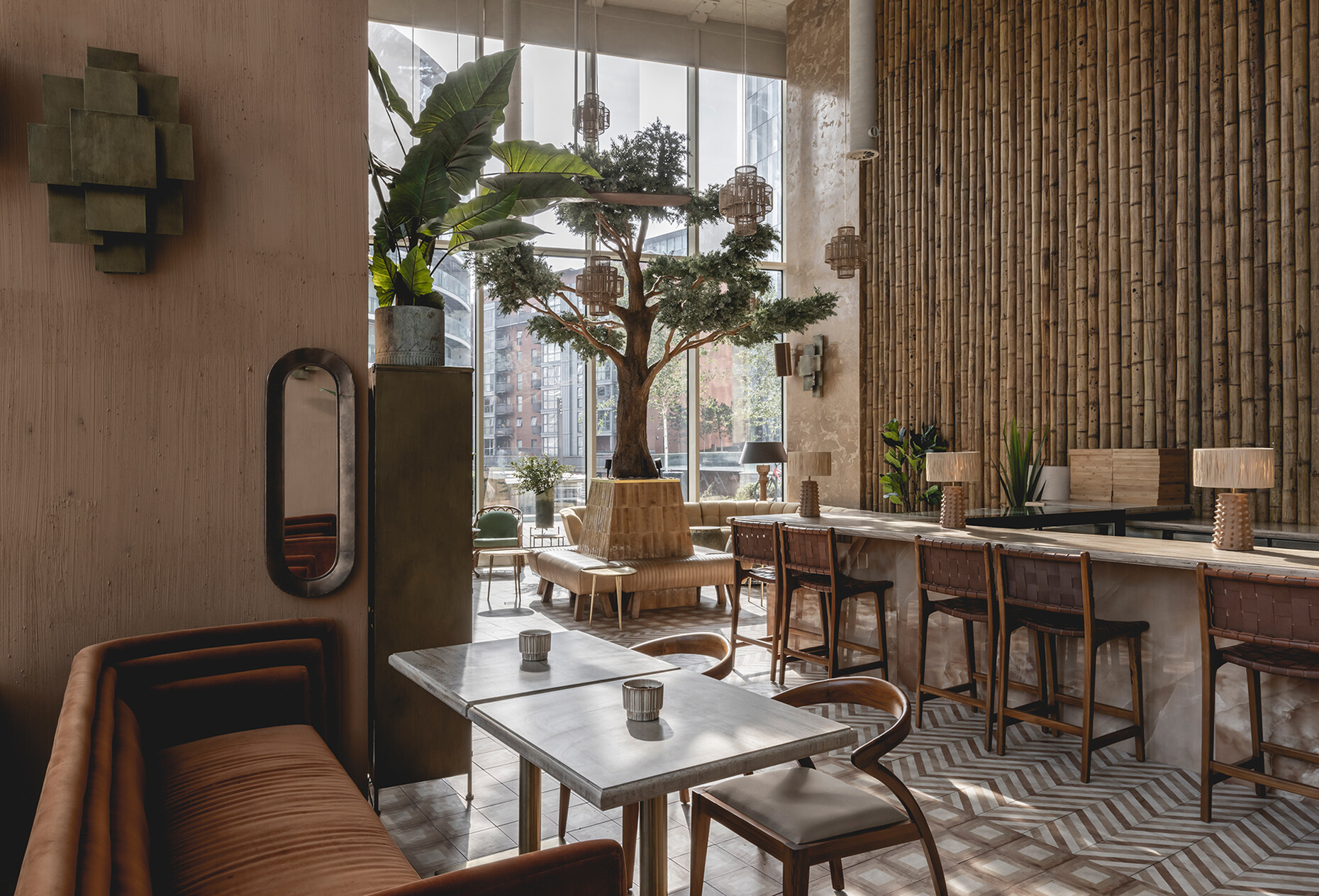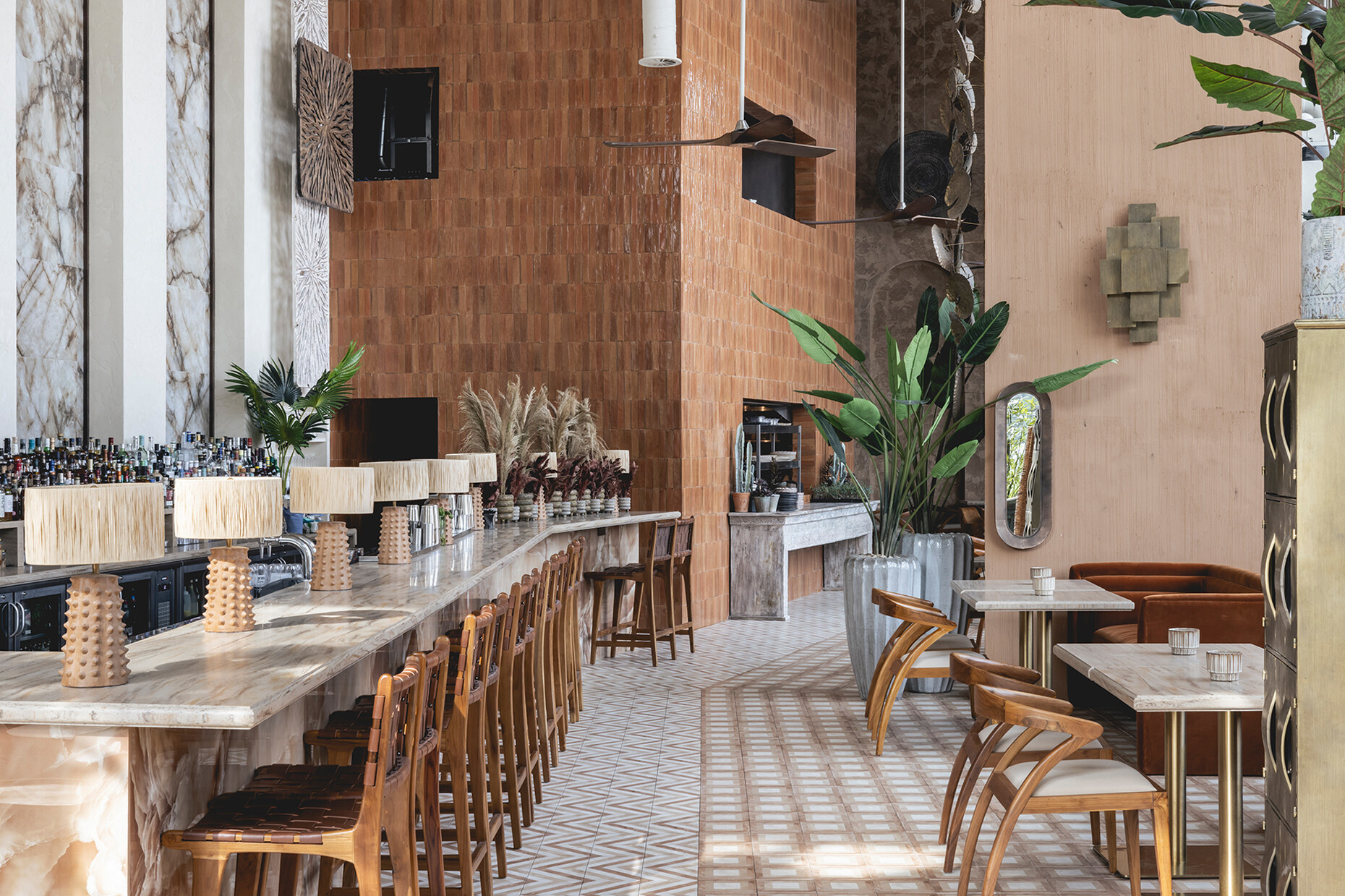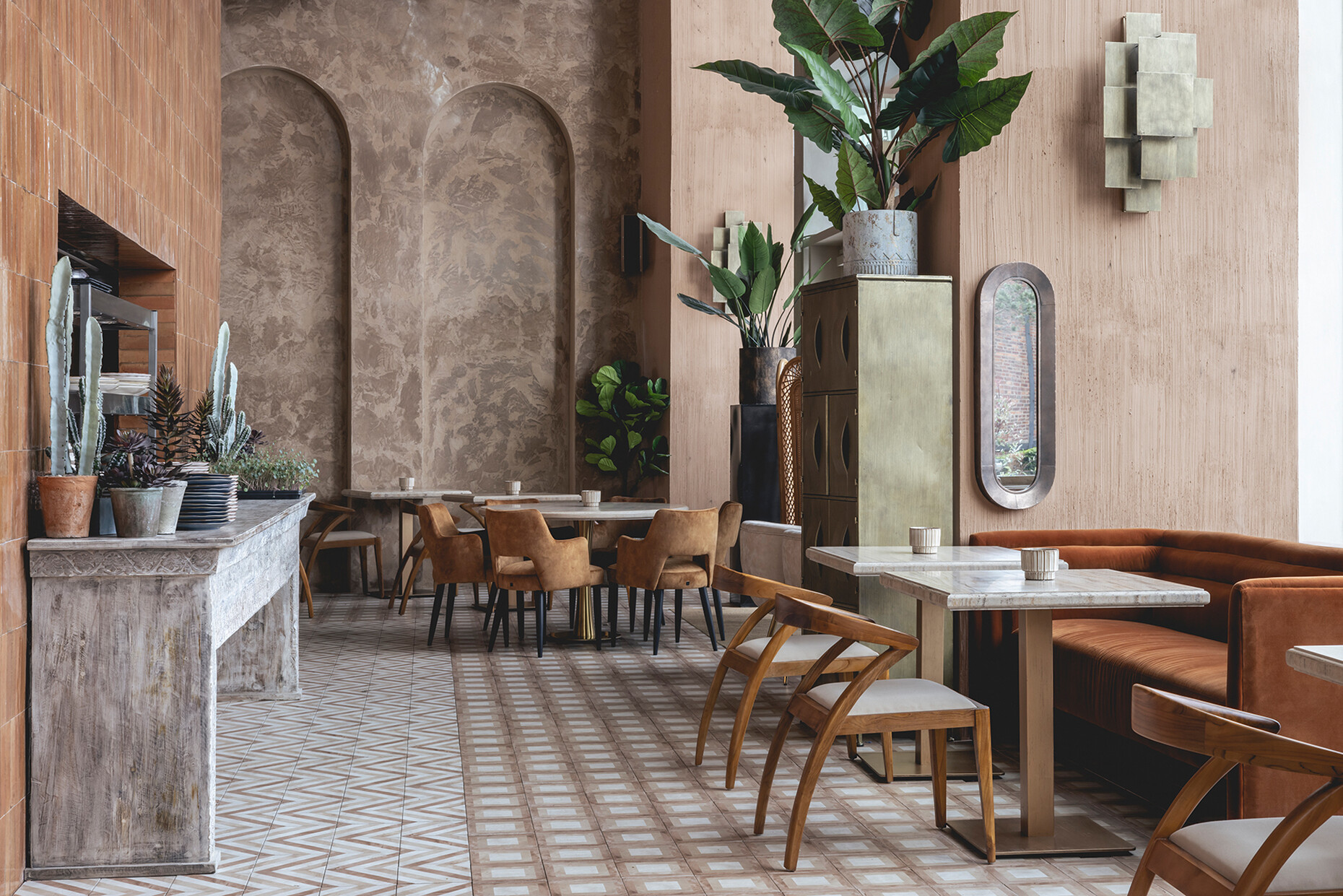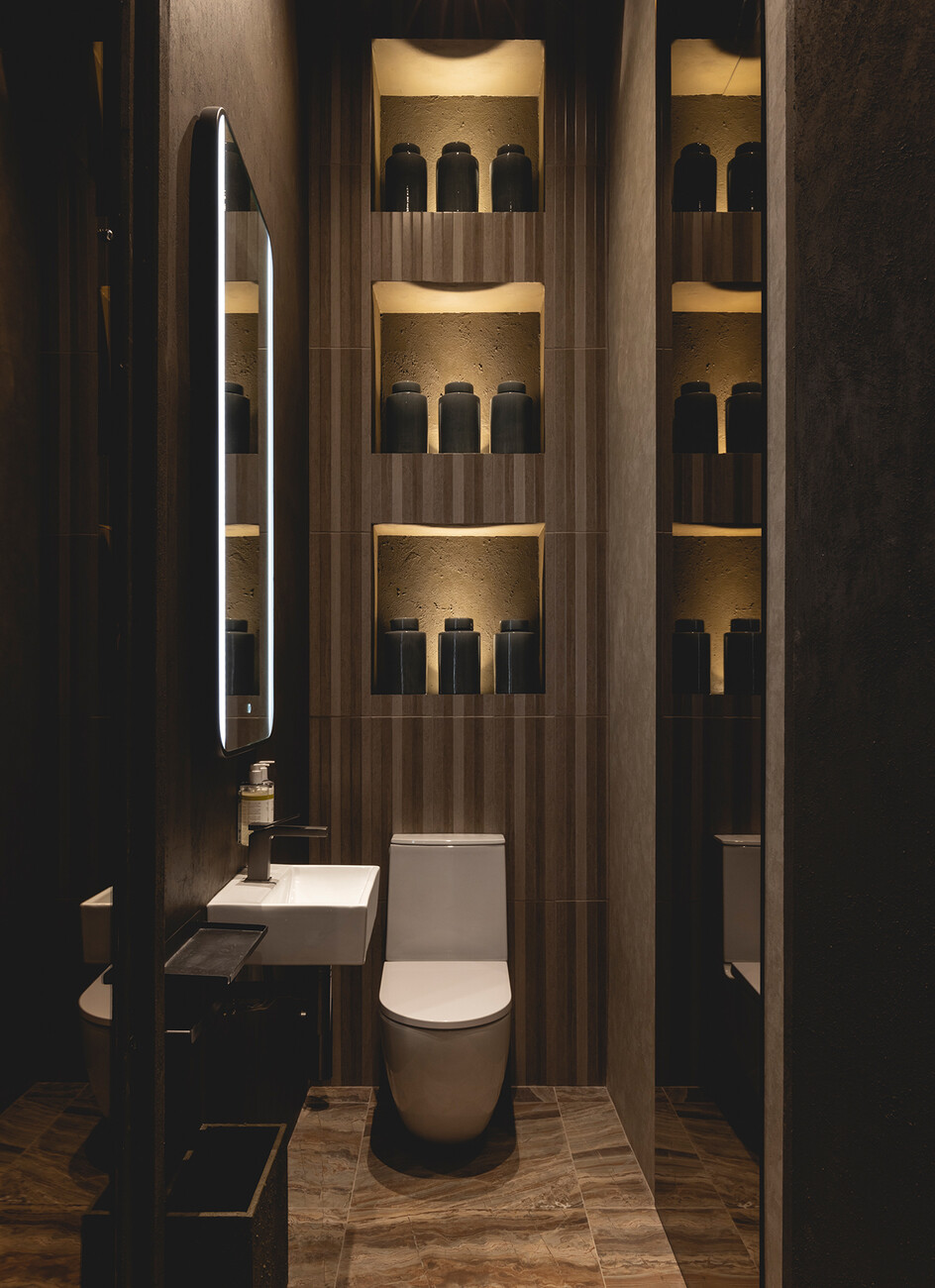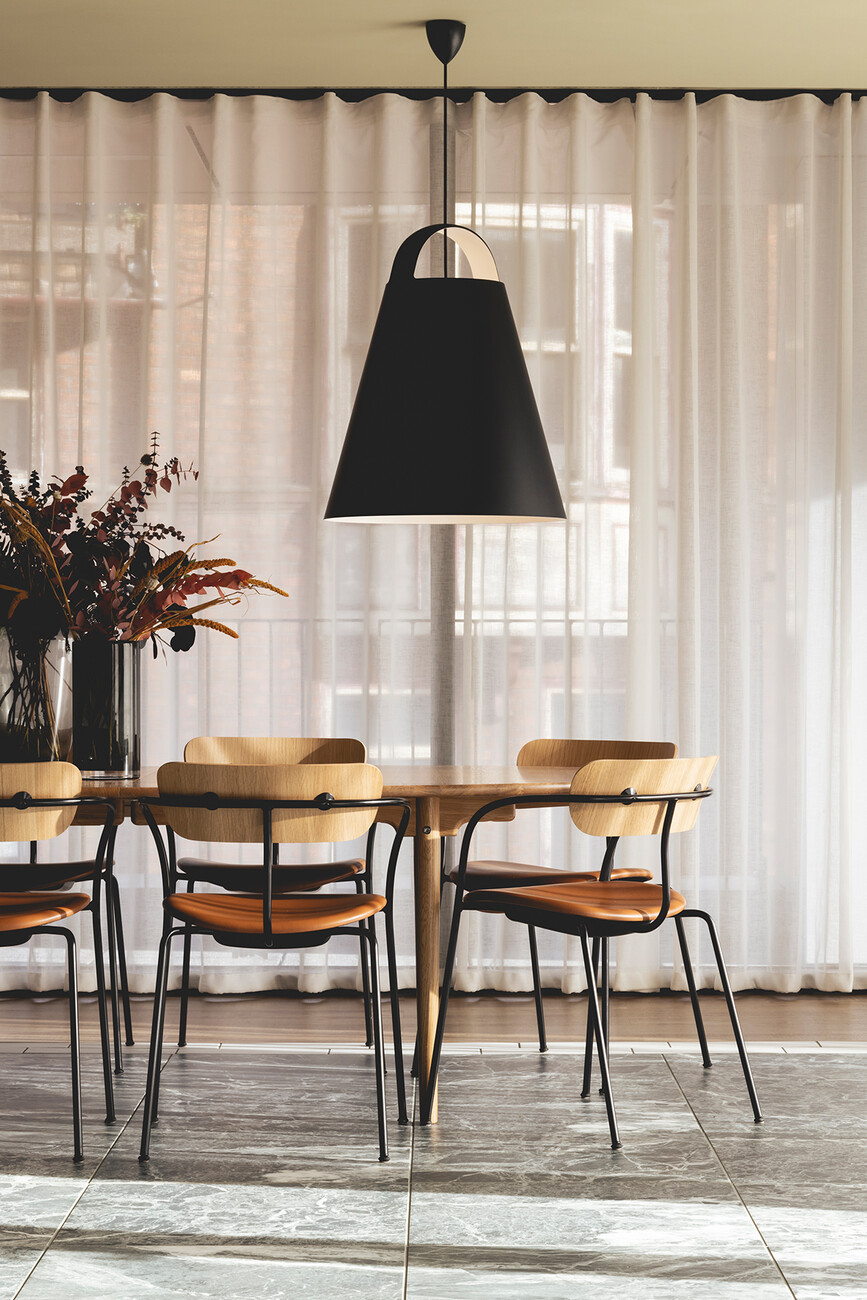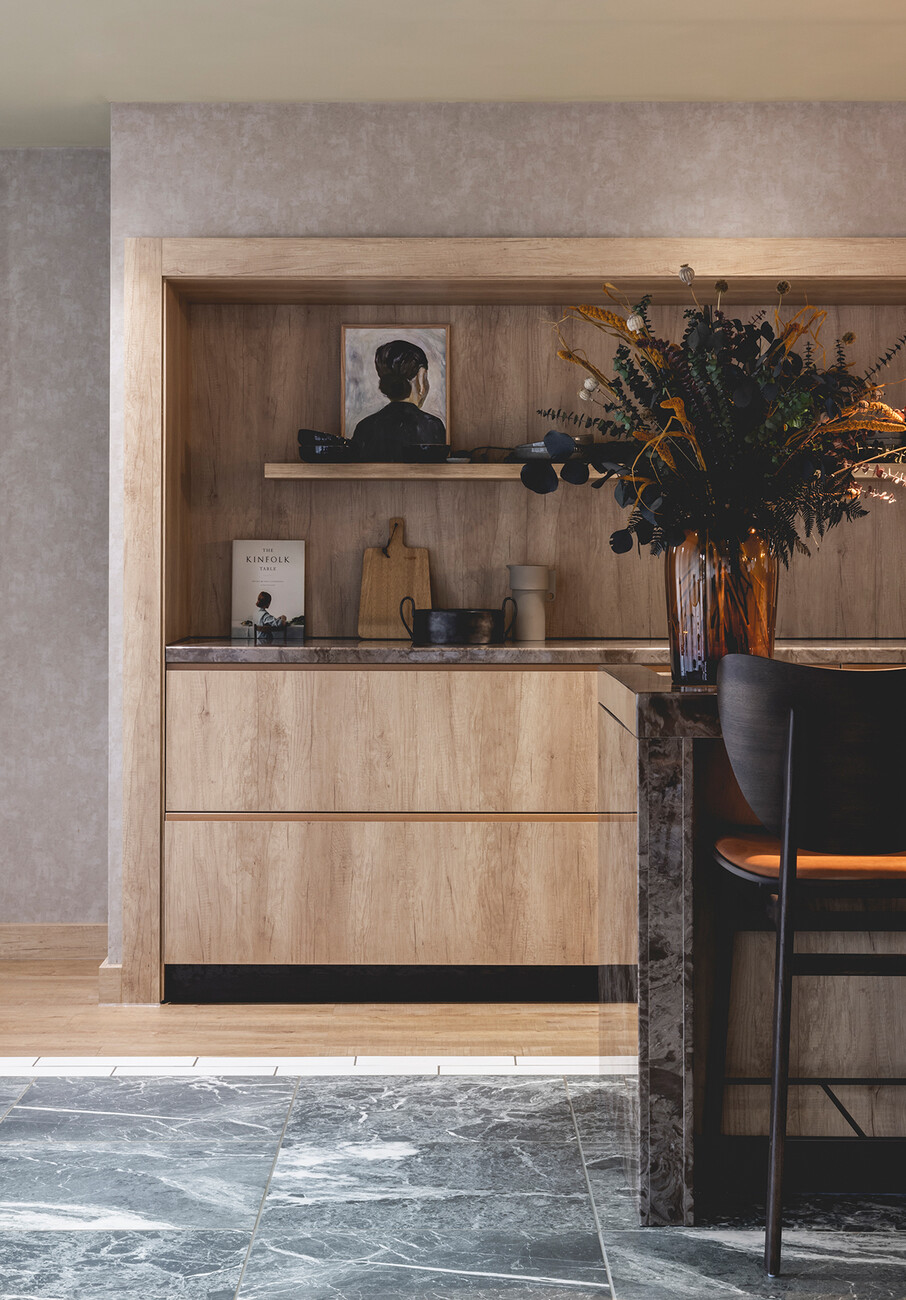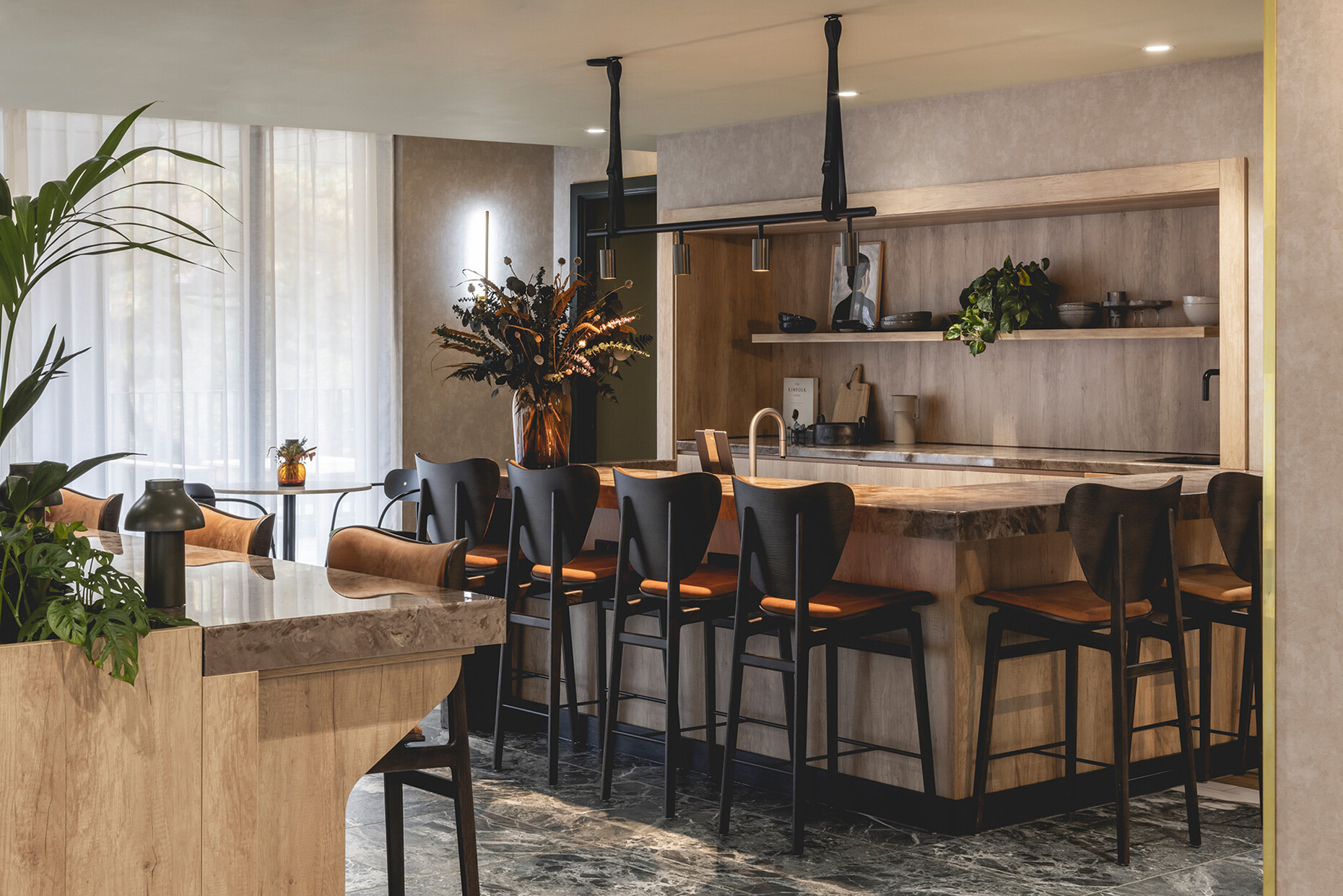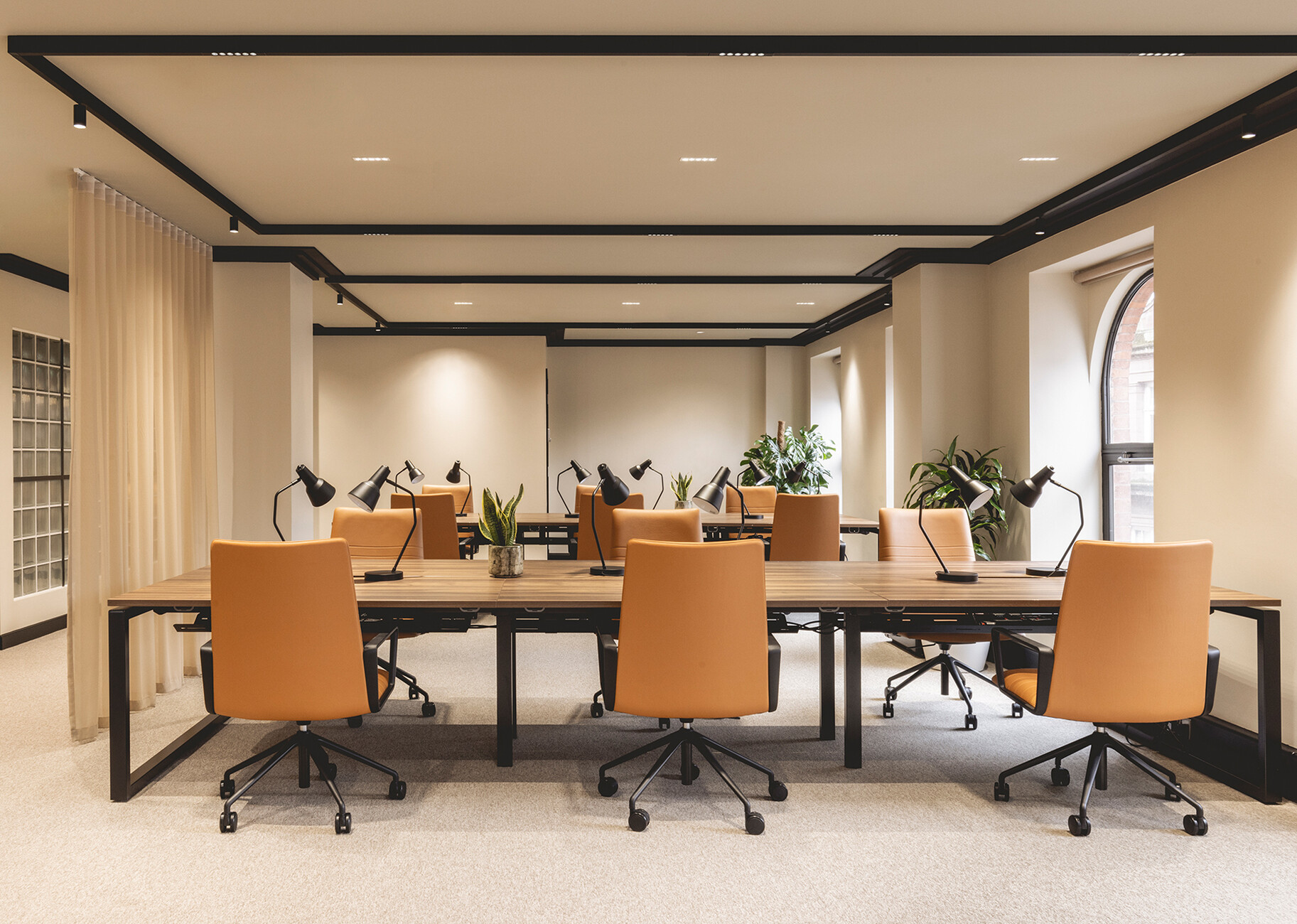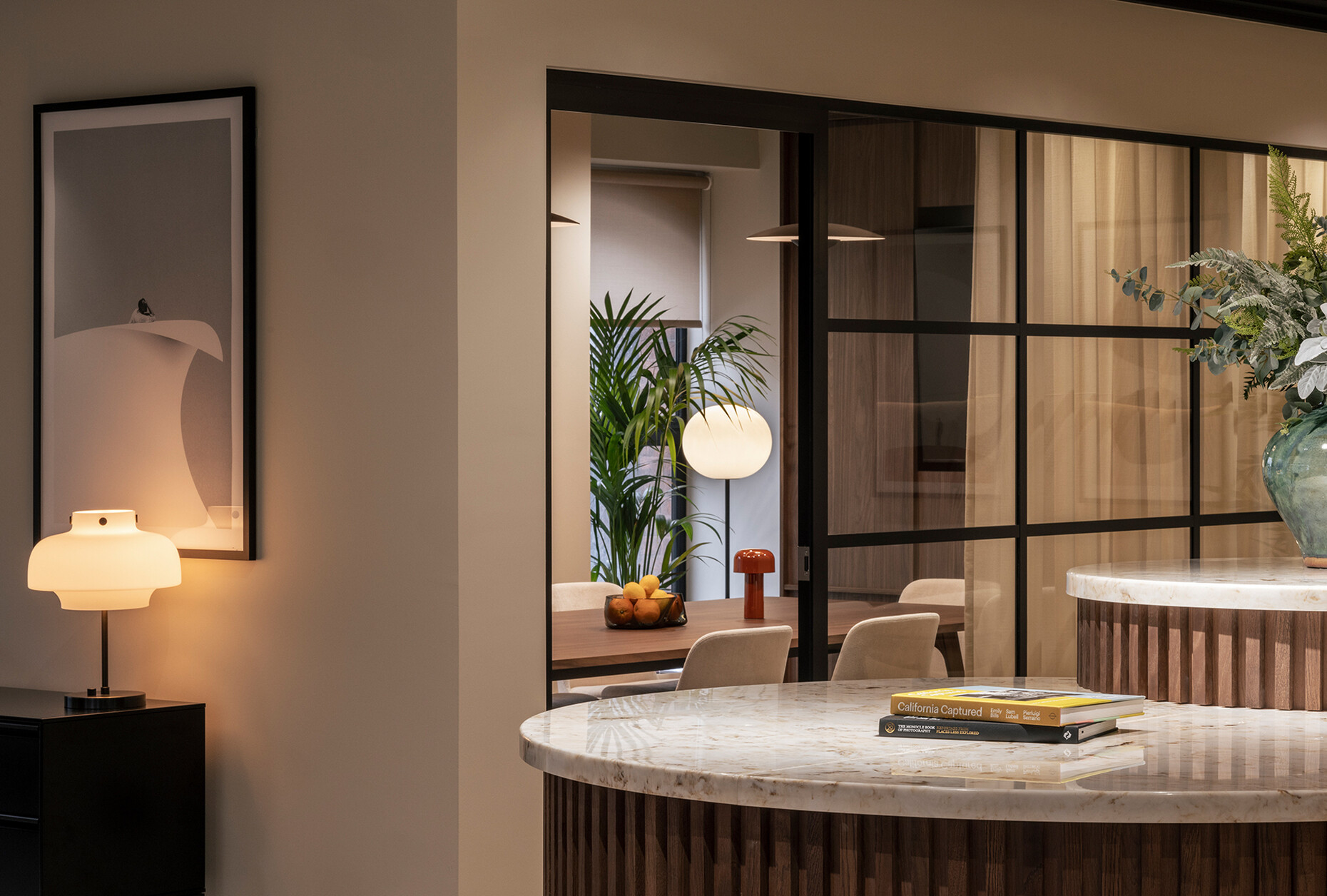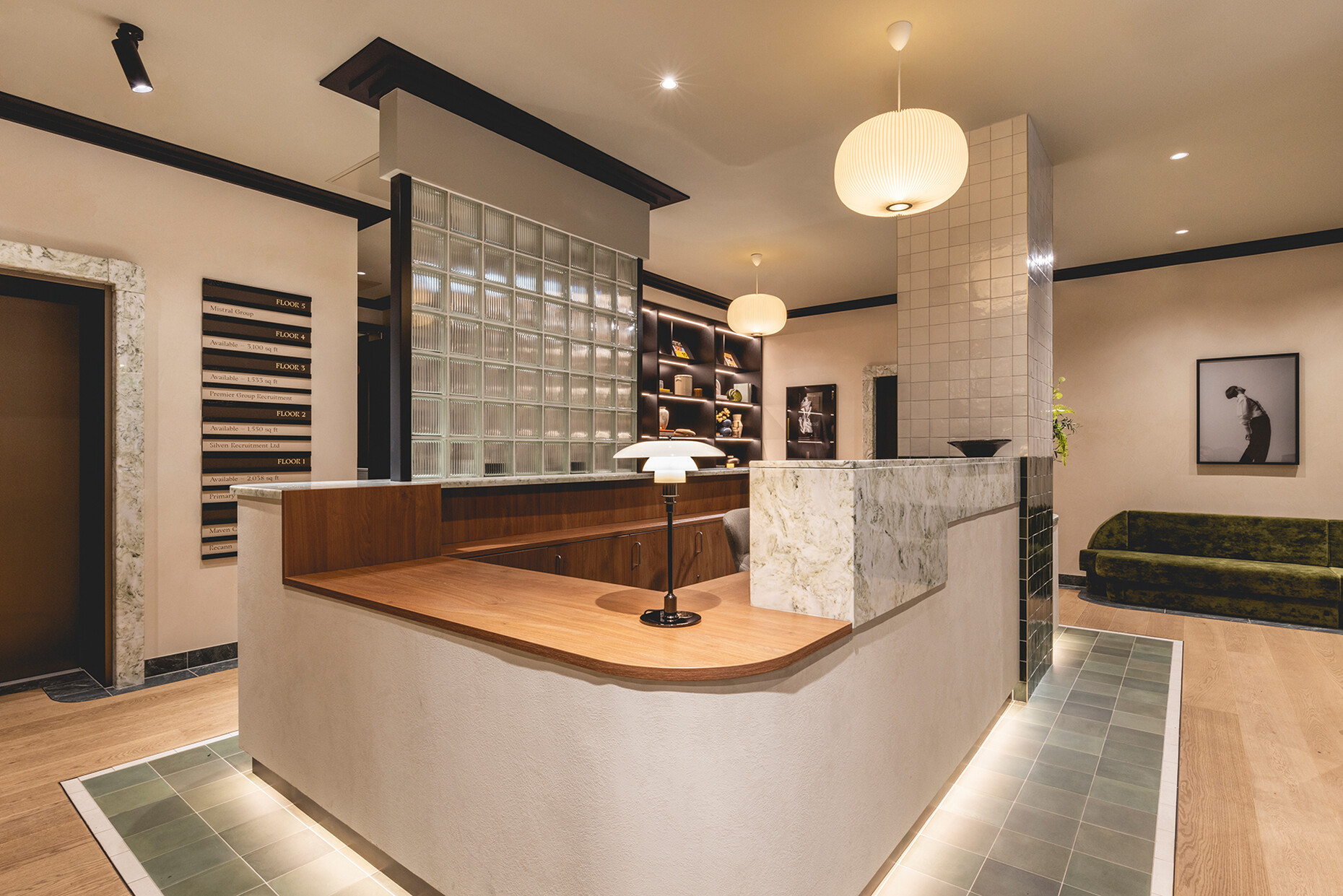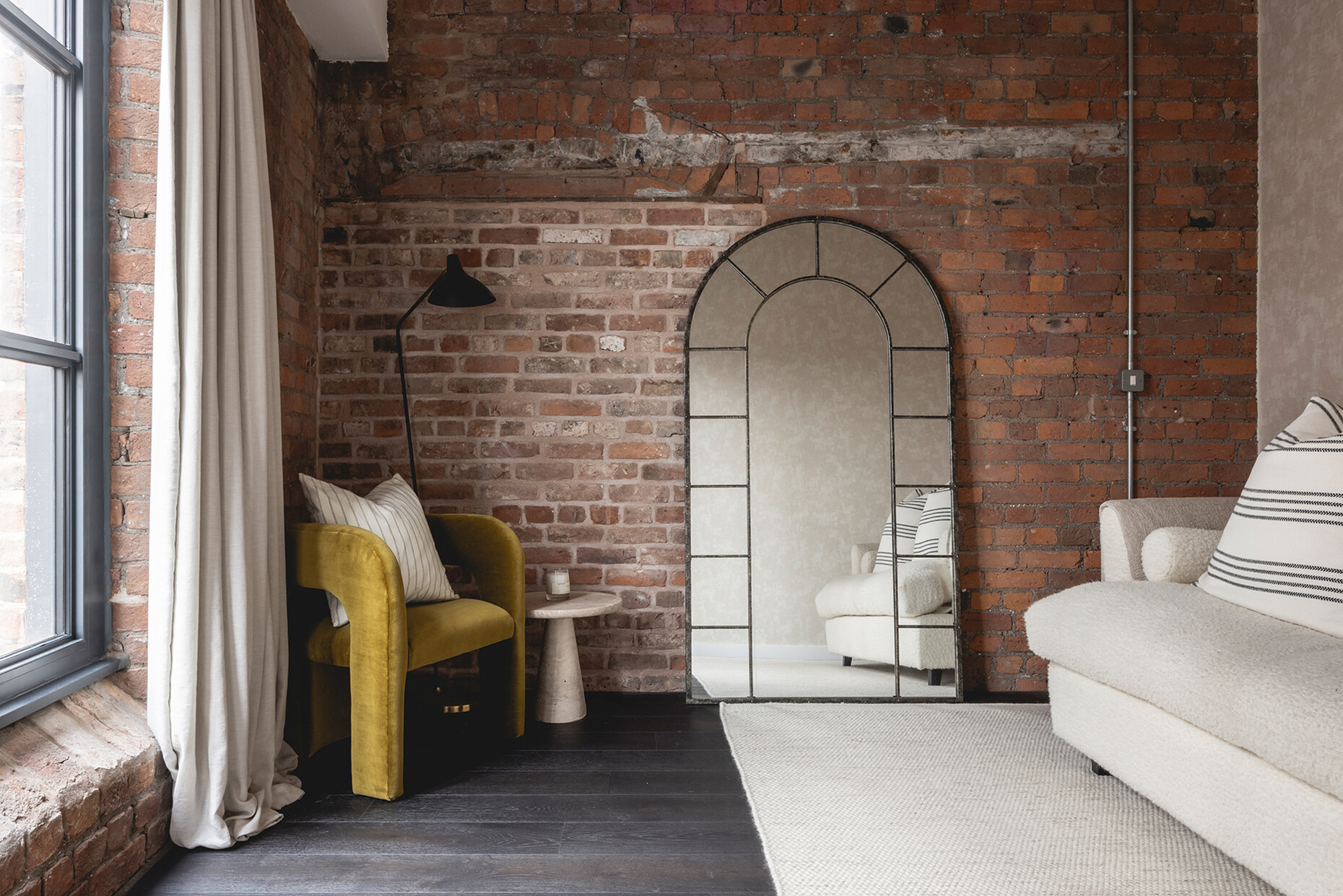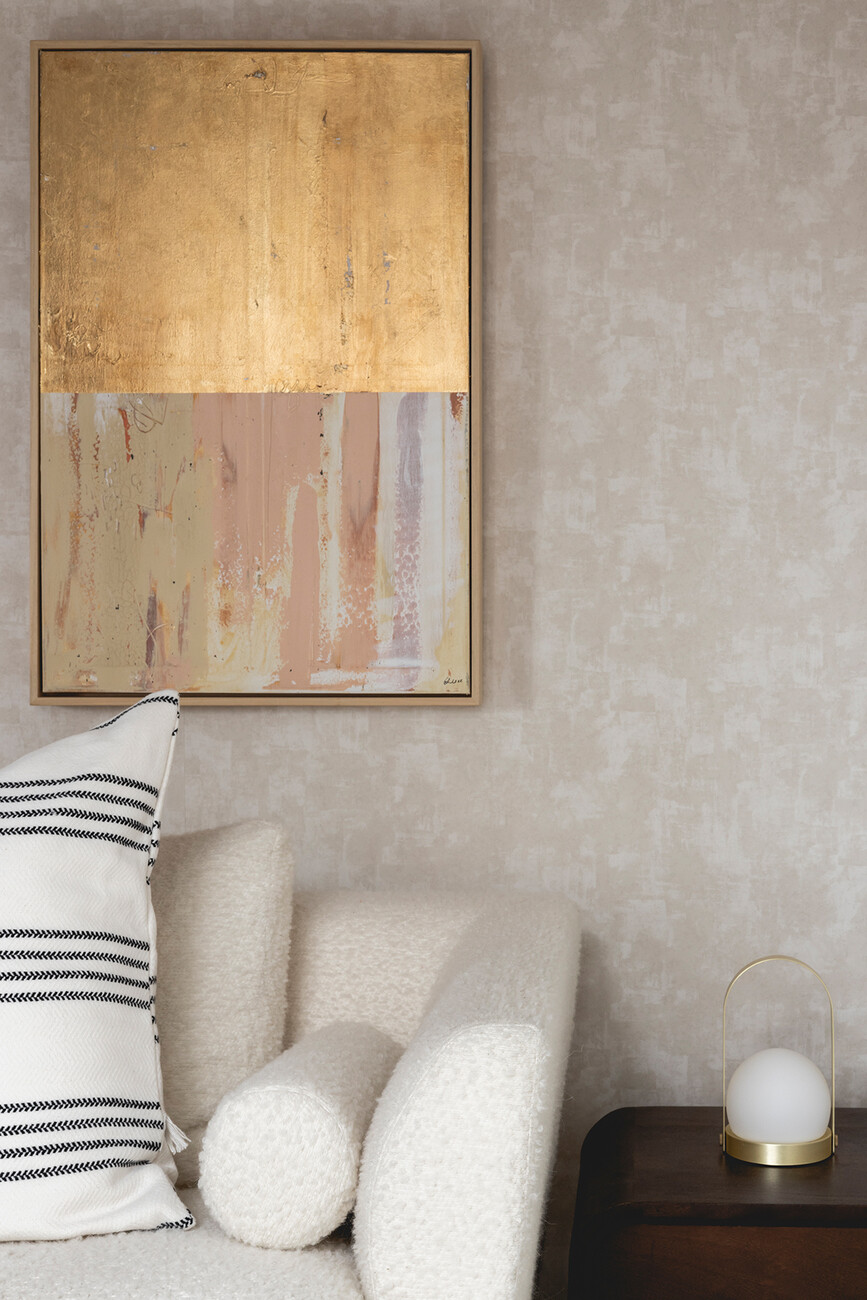RESTAURANT
With all senses
Anna Moldenhauer: What was the briefing, if there was one?
Franky Rousell: The idea behind "The Nest" was to create a multisensory, sustainable dining experience that serves as an urban retreat in the heart of Frankfurt. Working with my incredible team, we conceived a design inspired by the breezy, eclectic eateries of Tulum and California, providing an atmosphere of escapism and relaxation amidst the city's hustle. We drew inspiration from the likes of Elliots in London, the Gjelina Group in LA, and Sereneco in Brooklyn - designed by our current design lead, Emma Flowers. The interior leverages sensory design elements, such as ambient soundscapes, natural fragrances and visual aesthetics that incorporate nature, to enhance the overall dining experience and promote well-being for guests.
You want to create multi-sensory experiences for the guests, how did you realise this in ‘The Nest’?
Franky Rousell: As a studio, we prioritise sensory-led design in every project we undertake. Working alongside Jolie’s Creative Director, Sarah Wakefield, and lead designer, Emma Flowers, our design decisions for The Nest were rooted in creating an airy, escapist atmosphere that engages all of the senses. The focal point is a striking bar crafted from red gloss and natural stone, which anchors the space and serves both functional and aesthetic purposes, not only drawing the eye but also cementing the restaurant’s identity as a vibrant social hub. The tactile elements are designed to evoke comfort and luxury. Banquette seating is plush and inviting, encouraging long, leisurely meals and meaningful conversations. Surfaces like cool pink marble at the bar and natural wood and soft textiles in the outdoor lounge area invite touch and contribute to a relaxed yet refined environment. The carefully curated soundtrack features a mix of ambient music that complements the visual aesthetics, enhancing the atmosphere from the buzz of morning coffee, to the relaxed vibes of evening cocktails. This auditory landscape ensures that the acoustic experience supports the overall sensory journey, rather than overpowering it. The dining area and bar are scented with a blend of sandalwood, bergamot, and citrus, which are known for their anxiety-reducing properties. Outdoors, the aroma of fresh green fig uplifts and energises, while juniper and cedarwood in the restrooms revitalise and calm, ensuring a cohesive olfactory experience that complements the food and setting.
What criteria did you use to select the materials, colours and furniture?
Franky Rousell: Our material choices for "The Nest" were strategically selected to align with the project’s goals of sustainability, sensory experience and adaptability, given the unique constraints of its location and design ambitions. (Editor's note: Constructed above a pre-existing underground car park, The Nest faced unique structural challenges due to weight and loading limitations.) We chose limewash paint and tadelakt both for their natural, low VOC benefits and aesthetic finish, which enhances the texture and depth of surfaces. FSC-certified timber was incorporated to introduce warmth and a tactile element that appeals to the sense of touch, essential in a sensory-led design. Stone elements added a touch of raw beauty, while high martindale upholstery ensured durability and comfort.
Your approach to interior design and its effect on people is research-based – what are you currently researching?
Franky Rousell: We work in constant collaboration with neuroscientists in all of the fields of the senses to keep up to date with any of the latest reports and findings in this specific area. We are also currently working with sound engineer and composer to create our own Jolie soundscape, that works with the research we have found to date, to tell the story and the ethos of a brand through an emotive response of the user. This will be launching soon.
What are the first steps when you start a new project?
Franky Rousell: With each project our starting point is exploring the demographic that the space is targeted towards, coupled with defining the emotive responses we want to create in each of the zones upon arrival. This then triggers a phase of research where we really get under the skin of the individual user to understand them, understand how they wine, dine, dance, consume brands, music etc. We then pair this with current social, environmental and political issues that exist for this user, to ensure the space feels meaningful and that the user feels seen and well catered for. This process informs all our interior choices, and kick starts the interior design process.
You also design workplaces – how homely do you think a working atmosphere should be today?
Franky Rousell: We definitely believe that a working atmosphere today should be more homely and inviting! We know that sterile, white-box offices are not conducive to our best work, and this understanding has been increasingly recognised and integrated into modern workspaces. Post-pandemic, we observed hotel lobbies being repurposed for remote work, signalling a desire for the home comforts many of us became accustomed to during lockdowns. This trend has led to the 'hotelisation' of the workplace for some clients, featuring relaxed dress codes, real plants, and soft furnishings layered with a clean, sophisticated aesthetic. By incorporating elements of hospitality design, we can provide a touch of home luxury and a sense of escape and freedom. This “members club feel” also instils a sense of importance, pride and exclusivity, catering to the new expectations of emerging generations. Clients are now pushing the boundaries of what they offer their tenants, often including features like coffee bars, cafes, rooftop clubrooms, terraces, and shower and change facilities to transform the workspace into a destination.
To what extent do you use AI tools?
Franky Rousell: We are currently in the process of understanding where AI feels appropriate to use within our designs. We have our own in-house CGI offering at Jolie, that really allows us to translate our creative thoughts to our clients, however this is very much designed and driven by our talented team of designers. We understand how AI can speed up certain processes to allow our business to handle a high capacity of work, however at Jolie we really value the bespoke approach and therefore currently do not use AI to generate any of our imagery. From a copy perspective, our narrative is very much shaped by our Marketing team and directly from our designers and CEO to again give that sense of personality. We are keen to keep our eye on this area of development in the industry, and no doubt will trial certain applications as and when the proposition becomes stronger.
Contact
Neue Mainzer Str. 77
60311 Frankfurt am Main
Phone: 0163-7390108
